Theme of the Year 2021 for the Bauhaus Dessau Foundation: Infrastructure
Theme of the Year 2021 for the Bauhaus Dessau Foundation: Infrastructure
Theme of the Year 2021 for the Bauhaus Dessau Foundation: Infrastructure
Theme of the Year 2021 for the Bauhaus Dessau Foundation: Infrastructure
Theme of the Year 2021 for the Bauhaus Dessau Foundation: Infrastructure
Theme of the Year 2021 for the Bauhaus Dessau Foundation: Infrastructure
Theme of the Year 2021 for the Bauhaus Dessau Foundation: Infrastructure
Theme of the Year 2021 for the Bauhaus Dessau Foundation: Infrastructure
Theme of the Year 2021 for the Bauhaus Dessau Foundation: Infrastructure
Theme of the Year 2021 for the Bauhaus Dessau Foundation: Infrastructure
Theme of the Year 2021 for the Bauhaus Dessau Foundation: Infrastructure
Theme of the Year 2021 for the Bauhaus Dessau Foundation: Infrastructure
Portrait series of employees in the rooms of the ZKM (Center for Art and Media Karlsruhe) for the 2022 ZKM magazine "Inside View"
In the spring of 2022, the Ostkreuz photographer Thomas Meyer was invited by the Center for Art and Media Karlsruhe (ZKM) to photograph a personal work for the new ZKM magazine entitled "Inside View". He gave the idea of staging employees in the rooms a new dimension with impressive perspectives. His work was published as an artistic part of the magazine on 12 double pages plus the cover.
Portrait series of employees in the rooms of the ZKM (Center for Art and Media Karlsruhe) for the 2022 ZKM magazine "Inside View"
In the spring of 2022, the Ostkreuz photographer Thomas Meyer was invited by the Center for Art and Media Karlsruhe (ZKM) to photograph a personal work for the new ZKM magazine entitled "Inside View". He gave the idea of staging employees in the rooms a new dimension with impressive perspectives. His work was published as an artistic part of the magazine on 12 double pages plus the cover.
Portrait series of employees in the rooms of the ZKM (Center for Art and Media Karlsruhe) for the 2022 ZKM magazine "Inside View"
In the spring of 2022, the Ostkreuz photographer Thomas Meyer was invited by the Center for Art and Media Karlsruhe (ZKM) to photograph a personal work for the new ZKM magazine entitled "Inside View". He gave the idea of staging employees in the rooms a new dimension with impressive perspectives. His work was published as an artistic part of the magazine on 12 double pages plus the cover.
Portrait series of employees in the rooms of the ZKM (Center for Art and Media Karlsruhe) for the 2022 ZKM magazine "Inside View"
In the spring of 2022, the Ostkreuz photographer Thomas Meyer was invited by the Center for Art and Media Karlsruhe (ZKM) to photograph a personal work for the new ZKM magazine entitled "Inside View". He gave the idea of staging employees in the rooms a new dimension with impressive perspectives. His work was published as an artistic part of the magazine on 12 double pages plus the cover.
Portrait series of employees in the rooms of the ZKM (Center for Art and Media Karlsruhe) for the 2022 ZKM magazine "Inside View"
In the spring of 2022, the Ostkreuz photographer Thomas Meyer was invited by the Center for Art and Media Karlsruhe (ZKM) to photograph a personal work for the new ZKM magazine entitled "Inside View". He gave the idea of staging employees in the rooms a new dimension with impressive perspectives. His work was published as an artistic part of the magazine on 12 double pages plus the cover.
Portrait series of employees in the rooms of the ZKM (Center for Art and Media Karlsruhe) for the 2022 ZKM magazine "Inside View"
In the spring of 2022, the Ostkreuz photographer Thomas Meyer was invited by the Center for Art and Media Karlsruhe (ZKM) to photograph a personal work for the new ZKM magazine entitled "Inside View". He gave the idea of staging employees in the rooms a new dimension with impressive perspectives. His work was published as an artistic part of the magazine on 12 double pages plus the cover.
Portrait series of employees in the rooms of the ZKM (Center for Art and Media Karlsruhe) for the 2022 ZKM magazine "Inside View"
In the spring of 2022, the Ostkreuz photographer Thomas Meyer was invited by the Center for Art and Media Karlsruhe (ZKM) to photograph a personal work for the new ZKM magazine entitled "Inside View". He gave the idea of staging employees in the rooms a new dimension with impressive perspectives. His work was published as an artistic part of the magazine on 12 double pages plus the cover.
Portrait series of employees in the rooms of the ZKM (Center for Art and Media Karlsruhe) for the 2022 ZKM magazine "Inside View"
In the spring of 2022, the Ostkreuz photographer Thomas Meyer was invited by the Center for Art and Media Karlsruhe (ZKM) to photograph a personal work for the new ZKM magazine entitled "Inside View". He gave the idea of staging employees in the rooms a new dimension with impressive perspectives. His work was published as an artistic part of the magazine on 12 double pages plus the cover.
Portrait series of employees in the rooms of the ZKM (Center for Art and Media Karlsruhe) for the 2022 ZKM magazine "Inside View"
In the spring of 2022, the Ostkreuz photographer Thomas Meyer was invited by the Center for Art and Media Karlsruhe (ZKM) to photograph a personal work for the new ZKM magazine entitled "Inside View". He gave the idea of staging employees in the rooms a new dimension with impressive perspectives. His work was published as an artistic part of the magazine on 12 double pages plus the cover.
Portrait series of employees in the rooms of the ZKM (Center for Art and Media Karlsruhe) for the 2022 ZKM magazine "Inside View"
In the spring of 2022, the Ostkreuz photographer Thomas Meyer was invited by the Center for Art and Media Karlsruhe (ZKM) to photograph a personal work for the new ZKM magazine entitled "Inside View". He gave the idea of staging employees in the rooms a new dimension with impressive perspectives. His work was published as an artistic part of the magazine on 12 double pages plus the cover.
"Territory" is part of the big OSTKREUZ exhibition "Continent – In Search of Europe", exhibitet at the Akademie der Künste in Berlin, Kunstmuseum Erfurt and at the Deutsche Börse Photography Foundation in Eschborn.
"Thomas Meyer`s pictures open up much room for interpretation and associations, unforseen thoughts and feelings in a period of change, when identities are blurring, and clichés are no longer supportable. His work is full of free associations that will not and cannot provide any answers. His oeuvre is itself an inquiry."
"Territory" is part of the big OSTKREUZ exhibition "Continent – In Search of Europe", exhibitet at the Akademie der Künste in Berlin, Kunstmuseum Erfurt and at the Deutsche Börse Photography Foundation in Eschborn.
"Thomas Meyer`s pictures open up much room for interpretation and associations, unforseen thoughts and feelings in a period of change, when identities are blurring, and clichés are no longer supportable. His work is full of free associations that will not and cannot provide any answers. His oeuvre is itself an inquiry."
"Territory" is part of the big OSTKREUZ exhibition "Continent – In Search of Europe", exhibitet at the Akademie der Künste in Berlin, Kunstmuseum Erfurt and at the Deutsche Börse Photography Foundation in Eschborn.
"Thomas Meyer`s pictures open up much room for interpretation and associations, unforseen thoughts and feelings in a period of change, when identities are blurring, and clichés are no longer supportable. His work is full of free associations that will not and cannot provide any answers. His oeuvre is itself an inquiry."
"Territory" is part of the big OSTKREUZ exhibition "Continent – In Search of Europe", exhibitet at the Akademie der Künste in Berlin, Kunstmuseum Erfurt and at the Deutsche Börse Photography Foundation in Eschborn.
"Thomas Meyer`s pictures open up much room for interpretation and associations, unforseen thoughts and feelings in a period of change, when identities are blurring, and clichés are no longer supportable. His work is full of free associations that will not and cannot provide any answers. His oeuvre is itself an inquiry."
"Territory" is part of the big OSTKREUZ exhibition "Continent – In Search of Europe", exhibitet at the Akademie der Künste in Berlin, Kunstmuseum Erfurt and at the Deutsche Börse Photography Foundation in Eschborn.
"Thomas Meyer`s pictures open up much room for interpretation and associations, unforseen thoughts and feelings in a period of change, when identities are blurring, and clichés are no longer supportable. His work is full of free associations that will not and cannot provide any answers. His oeuvre is itself an inquiry."
"Territory" is part of the big OSTKREUZ exhibition "Continent – In Search of Europe", exhibitet at the Akademie der Künste in Berlin, Kunstmuseum Erfurt and at the Deutsche Börse Photography Foundation in Eschborn.
"Thomas Meyer`s pictures open up much room for interpretation and associations, unforseen thoughts and feelings in a period of change, when identities are blurring, and clichés are no longer supportable. His work is full of free associations that will not and cannot provide any answers. His oeuvre is itself an inquiry."
"Territory" is part of the big OSTKREUZ exhibition "Continent – In Search of Europe", exhibitet at the Akademie der Künste in Berlin, Kunstmuseum Erfurt and at the Deutsche Börse Photography Foundation in Eschborn.
"Thomas Meyer`s pictures open up much room for interpretation and associations, unforseen thoughts and feelings in a period of change, when identities are blurring, and clichés are no longer supportable. His work is full of free associations that will not and cannot provide any answers. His oeuvre is itself an inquiry."
"Territory" is part of the big OSTKREUZ exhibition "Continent – In Search of Europe", exhibitet at the Akademie der Künste in Berlin, Kunstmuseum Erfurt and at the Deutsche Börse Photography Foundation in Eschborn.
"Thomas Meyer`s pictures open up much room for interpretation and associations, unforseen thoughts and feelings in a period of change, when identities are blurring, and clichés are no longer supportable. His work is full of free associations that will not and cannot provide any answers. His oeuvre is itself an inquiry."
"Territory" is part of the big OSTKREUZ exhibition "Continent – In Search of Europe", exhibitet at the Akademie der Künste in Berlin, Kunstmuseum Erfurt and at the Deutsche Börse Photography Foundation in Eschborn.
"Thomas Meyer`s pictures open up much room for interpretation and associations, unforseen thoughts and feelings in a period of change, when identities are blurring, and clichés are no longer supportable. His work is full of free associations that will not and cannot provide any answers. His oeuvre is itself an inquiry."
Exhibition views at the Akademie der Künste in Berlin of "Territory", part of the big OSTKREUZ exhibition "Continent – In Search of Europe".
Exhibition views at the Akademie der Künste in Berlin of "Territory", part of the big OSTKREUZ exhibition "Continent – In Search of Europe".
Exhibition views at the Akademie der Künste in Berlin of "Territory", part of the big OSTKREUZ exhibition "Continent – In Search of Europe".
Exhibition views at the Akademie der Künste in Berlin of "Territory", part of the big OSTKREUZ exhibition "Continent – In Search of Europe".
Exhibition views at the Akademie der Künste in Berlin of "Territory", part of the big OSTKREUZ exhibition "Continent – In Search of Europe".
All pictures are taken in Berlin during the Corona shutdown/restrictions in spring 2020.
All pictures are taken in Berlin during the Corona shutdown/restrictions in spring 2020.
All pictures are taken in Berlin during the Corona shutdown/restrictions in spring 2020.
All pictures are taken in Berlin during the Corona shutdown/restrictions in spring 2020.
All pictures are taken in Berlin during the Corona shutdown/restrictions in spring 2020.
All pictures are taken in Berlin during the Corona shutdown/restrictions in spring 2020.
All pictures are taken in Berlin during the Corona shutdown/restrictions in spring 2020.
All pictures are taken in Berlin during the Corona shutdown/restrictions in spring 2020.
Employees of the Humboldt Forum in front of their favorite objects. On assignment for the Humboldt Forum Magazine.
Employees of the Humboldt Forum in front of their favorite objects. On assignment for the Humboldt Forum Magazine.
Employees of the Humboldt Forum in front of their favorite objects. On assignment for the Humboldt Forum Magazine.
Employees of the Humboldt Forum in front of their favorite objects. On assignment for the Humboldt Forum Magazine.
Employees of the Humboldt Forum in front of their favorite objects. On assignment for the Humboldt Forum Magazine.
Employees of the Humboldt Forum in front of their favorite objects. On assignment for the Humboldt Forum Magazine.
Employees of the Humboldt Forum in front of their favorite objects. On assignment for the Humboldt Forum Magazine.
Employees of the Humboldt Forum in front of their favorite objects. On assignment for the Humboldt Forum Magazine.
Employees of the Humboldt Forum in front of their favorite objects. On assignment for the Humboldt Forum Magazine.
Employees of the Humboldt Forum in front of their favorite objects. On assignment for the Humboldt Forum Magazine.
Employees of the Humboldt Forum in front of their favorite objects. On assignment for the Humboldt Forum Magazine.
Employees of the Humboldt Forum in front of their favorite objects. On assignment for the Humboldt Forum Magazine.
Employees of the Humboldt Forum in front of their favorite objects. On assignment for the Humboldt Forum Magazine.
Theme of the Year 2022 for the Bauhaus Dessau Foundation: Hygiene
Theme of the Year 2022 for the Bauhaus Dessau Foundation: Hygiene
Theme of the Year 2022 for the Bauhaus Dessau Foundation: Hygiene
Theme of the Year 2022 for the Bauhaus Dessau Foundation: Hygiene
Theme of the Year 2022 for the Bauhaus Dessau Foundation: Hygiene
Theme of the Year 2022 for the Bauhaus Dessau Foundation: Hygiene
Theme of the Year 2022 for the Bauhaus Dessau Foundation: Hygiene
Theme of the Year 2022 for the Bauhaus Dessau Foundation: Hygiene
Theme of the Year 2022 for the Bauhaus Dessau Foundation: Hygiene
Theme of the Year 2022 for the Bauhaus Dessau Foundation: Hygiene
Theme of the Year 2022 for the Bauhaus Dessau Foundation: Hygiene
Theme of the Year 2022 for the Bauhaus Dessau Foundation: Hygiene
This portrait series is one part from the work of 16 photographers for a book and exhibition project in collaboration with my agency OSTKREUZ and Redaktion & Gestaltung.
This portrait series is one part from the work of 16 photographers for a book and exhibition project in collaboration with my agency OSTKREUZ and Redaktion & Gestaltung.
This portrait series is one part from the work of 16 photographers for a book and exhibition project in collaboration with my agency OSTKREUZ and Redaktion & Gestaltung.
This portrait series is one part from the work of 16 photographers for a book and exhibition project in collaboration with my agency OSTKREUZ and Redaktion & Gestaltung.
This portrait series is one part from the work of 16 photographers for a book and exhibition project in collaboration with my agency OSTKREUZ and Redaktion & Gestaltung.
This portrait series is one part from the work of 16 photographers for a book and exhibition project in collaboration with my agency OSTKREUZ and Redaktion & Gestaltung.
This portrait series is one part from the work of 16 photographers for a book and exhibition project in collaboration with my agency OSTKREUZ and Redaktion & Gestaltung.
This portrait series is one part from the work of 16 photographers for a book and exhibition project in collaboration with my agency OSTKREUZ and Redaktion & Gestaltung.
Cashmere manufactory Altai-Himalaya in Kathmandu, Nepal
Cashmere manufactory Altai-Himalaya in Kathmandu, Nepal
Cashmere manufactory Altai-Himalaya in Kathmandu, Nepal
Cashmere manufactory Altai-Himalaya in Kathmandu, Nepal
Cashmere manufactory Altai-Himalaya in Kathmandu, Nepal
Cashmere manufactory Altai-Himalaya in Kathmandu, Nepal
Cashmere manufactory Altai-Himalaya in Kathmandu, Nepal
Cashmere manufactory Altai-Himalaya in Kathmandu, Nepal
Cashmere manufactory Altai-Himalaya in Kathmandu, Nepal
Cashmere manufactory Altai-Himalaya in Kathmandu, Nepal
Cashmere manufactory Altai-Himalaya in Kathmandu, Nepal
Cashmere manufactory Altai-Himalaya in Kathmandu, Nepal
I went to Dubai without any specific intentions. I saw the plans, all the buildings, but potentially the only achievement to be found at this place is the fact it was built at all. I could not discern any vision, idea, or human concept of how the inhabitants want to live. It was all pure commerce. That was interesting to me because in most places in the world things work differently. When I did see people, then they stood there lost in the scenery that they had built, and they themselves became part of the stage set. The whole time, I had the feeling as if the downfall were already inherent in the rise, as if the unfinished buildings could also be ruins, as if becoming and decaying were merged into one.
"The Resort" is part of the OSTKREUZ project "Die Stadt. Vom Werden und Vergehen"
I went to Dubai without any specific intentions. I saw the plans, all the buildings, but potentially the only achievement to be found at this place is the fact it was built at all. I could not discern any vision, idea, or human concept of how the inhabitants want to live. It was all pure commerce. That was interesting to me because in most places in the world things work differently. When I did see people, then they stood there lost in the scenery that they had built, and they themselves became part of the stage set. The whole time, I had the feeling as if the downfall were already inherent in the rise, as if the unfinished buildings could also be ruins, as if becoming and decaying were merged into one.
"The Resort" is part of the OSTKREUZ project "Die Stadt. Vom Werden und Vergehen"
I went to Dubai without any specific intentions. I saw the plans, all the buildings, but potentially the only achievement to be found at this place is the fact it was built at all. I could not discern any vision, idea, or human concept of how the inhabitants want to live. It was all pure commerce. That was interesting to me because in most places in the world things work differently. When I did see people, then they stood there lost in the scenery that they had built, and they themselves became part of the stage set. The whole time, I had the feeling as if the downfall were already inherent in the rise, as if the unfinished buildings could also be ruins, as if becoming and decaying were merged into one.
"The Resort" is part of the OSTKREUZ project "Die Stadt. Vom Werden und Vergehen"
I went to Dubai without any specific intentions. I saw the plans, all the buildings, but potentially the only achievement to be found at this place is the fact it was built at all. I could not discern any vision, idea, or human concept of how the inhabitants want to live. It was all pure commerce. That was interesting to me because in most places in the world things work differently. When I did see people, then they stood there lost in the scenery that they had built, and they themselves became part of the stage set. The whole time, I had the feeling as if the downfall were already inherent in the rise, as if the unfinished buildings could also be ruins, as if becoming and decaying were merged into one.
"The Resort" is part of the OSTKREUZ project "Die Stadt. Vom Werden und Vergehen"
I went to Dubai without any specific intentions. I saw the plans, all the buildings, but potentially the only achievement to be found at this place is the fact it was built at all. I could not discern any vision, idea, or human concept of how the inhabitants want to live. It was all pure commerce. That was interesting to me because in most places in the world things work differently. When I did see people, then they stood there lost in the scenery that they had built, and they themselves became part of the stage set. The whole time, I had the feeling as if the downfall were already inherent in the rise, as if the unfinished buildings could also be ruins, as if becoming and decaying were merged into one.
"The Resort" is part of the OSTKREUZ project "Die Stadt. Vom Werden und Vergehen"
I went to Dubai without any specific intentions. I saw the plans, all the buildings, but potentially the only achievement to be found at this place is the fact it was built at all. I could not discern any vision, idea, or human concept of how the inhabitants want to live. It was all pure commerce. That was interesting to me because in most places in the world things work differently. When I did see people, then they stood there lost in the scenery that they had built, and they themselves became part of the stage set. The whole time, I had the feeling as if the downfall were already inherent in the rise, as if the unfinished buildings could also be ruins, as if becoming and decaying were merged into one.
"The Resort" is part of the OSTKREUZ project "Die Stadt. Vom Werden und Vergehen"
I went to Dubai without any specific intentions. I saw the plans, all the buildings, but potentially the only achievement to be found at this place is the fact it was built at all. I could not discern any vision, idea, or human concept of how the inhabitants want to live. It was all pure commerce. That was interesting to me because in most places in the world things work differently. When I did see people, then they stood there lost in the scenery that they had built, and they themselves became part of the stage set. The whole time, I had the feeling as if the downfall were already inherent in the rise, as if the unfinished buildings could also be ruins, as if becoming and decaying were merged into one.
"The Resort" is part of the OSTKREUZ project "Die Stadt. Vom Werden und Vergehen"
I went to Dubai without any specific intentions. I saw the plans, all the buildings, but potentially the only achievement to be found at this place is the fact it was built at all. I could not discern any vision, idea, or human concept of how the inhabitants want to live. It was all pure commerce. That was interesting to me because in most places in the world things work differently. When I did see people, then they stood there lost in the scenery that they had built, and they themselves became part of the stage set. The whole time, I had the feeling as if the downfall were already inherent in the rise, as if the unfinished buildings could also be ruins, as if becoming and decaying were merged into one.
"The Resort" is part of the OSTKREUZ project "Die Stadt. Vom Werden und Vergehen"
I went to Dubai without any specific intentions. I saw the plans, all the buildings, but potentially the only achievement to be found at this place is the fact it was built at all. I could not discern any vision, idea, or human concept of how the inhabitants want to live. It was all pure commerce. That was interesting to me because in most places in the world things work differently. When I did see people, then they stood there lost in the scenery that they had built, and they themselves became part of the stage set. The whole time, I had the feeling as if the downfall were already inherent in the rise, as if the unfinished buildings could also be ruins, as if becoming and decaying were merged into one.
"The Resort" is part of the OSTKREUZ project "Die Stadt. Vom Werden und Vergehen"
I went to Dubai without any specific intentions. I saw the plans, all the buildings, but potentially the only achievement to be found at this place is the fact it was built at all. I could not discern any vision, idea, or human concept of how the inhabitants want to live. It was all pure commerce. That was interesting to me because in most places in the world things work differently. When I did see people, then they stood there lost in the scenery that they had built, and they themselves became part of the stage set. The whole time, I had the feeling as if the downfall were already inherent in the rise, as if the unfinished buildings could also be ruins, as if becoming and decaying were merged into one.
"The Resort" is part of the OSTKREUZ project "Die Stadt. Vom Werden und Vergehen"
I went to Dubai without any specific intentions. I saw the plans, all the buildings, but potentially the only achievement to be found at this place is the fact it was built at all. I could not discern any vision, idea, or human concept of how the inhabitants want to live. It was all pure commerce. That was interesting to me because in most places in the world things work differently. When I did see people, then they stood there lost in the scenery that they had built, and they themselves became part of the stage set. The whole time, I had the feeling as if the downfall were already inherent in the rise, as if the unfinished buildings could also be ruins, as if becoming and decaying were merged into one.
"The Resort" is part of the OSTKREUZ project "Die Stadt. Vom Werden und Vergehen"
I went to Dubai without any specific intentions. I saw the plans, all the buildings, but potentially the only achievement to be found at this place is the fact it was built at all. I could not discern any vision, idea, or human concept of how the inhabitants want to live. It was all pure commerce. That was interesting to me because in most places in the world things work differently. When I did see people, then they stood there lost in the scenery that they had built, and they themselves became part of the stage set. The whole time, I had the feeling as if the downfall were already inherent in the rise, as if the unfinished buildings could also be ruins, as if becoming and decaying were merged into one.
"The Resort" is part of the OSTKREUZ project "Die Stadt. Vom Werden und Vergehen"
I went to Dubai without any specific intentions. I saw the plans, all the buildings, but potentially the only achievement to be found at this place is the fact it was built at all. I could not discern any vision, idea, or human concept of how the inhabitants want to live. It was all pure commerce. That was interesting to me because in most places in the world things work differently. When I did see people, then they stood there lost in the scenery that they had built, and they themselves became part of the stage set. The whole time, I had the feeling as if the downfall were already inherent in the rise, as if the unfinished buildings could also be ruins, as if becoming and decaying were merged into one.
"The Resort" is part of the OSTKREUZ project "Die Stadt. Vom Werden und Vergehen"
An illustrated book by the Bauhaus Dessau Foundation on Bauhaus Architecture in Dessau. Texts by Florian Strob and photographs by Thomas Meyer. 2019 Published by Hirmer Verlag.
Shortlist German Photo Book Prize 2019/20 (Silver).
An illustrated book by the Bauhaus Dessau Foundation on Bauhaus Architecture in Dessau. Texts by Florian Strob and photographs by Thomas Meyer. 2019 Published by Hirmer Verlag.
Shortlist German Photo Book Prize 2019/20 (Silver).
An illustrated book by the Bauhaus Dessau Foundation on Bauhaus Architecture in Dessau. Texts by Florian Strob and photographs by Thomas Meyer. 2019 Published by Hirmer Verlag.
Shortlist German Photo Book Prize 2019/20 (Silver).
An illustrated book by the Bauhaus Dessau Foundation on Bauhaus Architecture in Dessau. Texts by Florian Strob and photographs by Thomas Meyer. 2019 Published by Hirmer Verlag.
Shortlist German Photo Book Prize 2019/20 (Silver).
An illustrated book by the Bauhaus Dessau Foundation on Bauhaus Architecture in Dessau. Texts by Florian Strob and photographs by Thomas Meyer. 2019 Published by Hirmer Verlag.
Shortlist German Photo Book Prize 2019/20 (Silver).
An illustrated book by the Bauhaus Dessau Foundation on Bauhaus Architecture in Dessau. Texts by Florian Strob and photographs by Thomas Meyer. 2019 Published by Hirmer Verlag.
Shortlist German Photo Book Prize 2019/20 (Silver).
An illustrated book by the Bauhaus Dessau Foundation on Bauhaus Architecture in Dessau. Texts by Florian Strob and photographs by Thomas Meyer. 2019 Published by Hirmer Verlag.
Shortlist German Photo Book Prize 2019/20 (Silver).
An illustrated book by the Bauhaus Dessau Foundation on Bauhaus Architecture in Dessau. Texts by Florian Strob and photographs by Thomas Meyer. 2019 Published by Hirmer Verlag.
Shortlist German Photo Book Prize 2019/20 (Silver).
An illustrated book by the Bauhaus Dessau Foundation on Bauhaus Architecture in Dessau. Texts by Florian Strob and photographs by Thomas Meyer. 2019 Published by Hirmer Verlag.
Shortlist German Photo Book Prize 2019/20 (Silver).
An illustrated book by the Bauhaus Dessau Foundation on Bauhaus Architecture in Dessau. Texts by Florian Strob and photographs by Thomas Meyer. 2019 Published by Hirmer Verlag.
Shortlist German Photo Book Prize 2019/20 (Silver).
An illustrated book by the Bauhaus Dessau Foundation on Bauhaus Architecture in Dessau. Texts by Florian Strob and photographs by Thomas Meyer. 2019 Published by Hirmer Verlag.
Shortlist German Photo Book Prize 2019/20 (Silver).
An illustrated book by the Bauhaus Dessau Foundation on Bauhaus Architecture in Dessau. Texts by Florian Strob and photographs by Thomas Meyer. 2019 Published by Hirmer Verlag.
Shortlist German Photo Book Prize 2019/20 (Silver).
An illustrated book by the Bauhaus Dessau Foundation on Bauhaus Architecture in Dessau. Texts by Florian Strob and photographs by Thomas Meyer. 2019 Published by Hirmer Verlag.
Shortlist German Photo Book Prize 2019/20 (Silver).
An illustrated book by the Bauhaus Dessau Foundation on Bauhaus Architecture in Dessau. Texts by Florian Strob and photographs by Thomas Meyer. 2019 Published by Hirmer Verlag.
Shortlist German Photo Book Prize 2019/20 (Silver).
An illustrated book by the Bauhaus Dessau Foundation on Bauhaus Architecture in Dessau. Texts by Florian Strob and photographs by Thomas Meyer. 2019 Published by Hirmer Verlag.
Shortlist German Photo Book Prize 2019/20 (Silver).
An illustrated book by the Bauhaus Dessau Foundation on Bauhaus Architecture in Dessau. Texts by Florian Strob and photographs by Thomas Meyer. 2019 Published by Hirmer Verlag.
Shortlist German Photo Book Prize 2019/20 (Silver).
An illustrated book by the Bauhaus Dessau Foundation on Bauhaus Architecture in Dessau. Texts by Florian Strob and photographs by Thomas Meyer. 2019 Published by Hirmer Verlag.
Shortlist German Photo Book Prize 2019/20 (Silver).
An illustrated book by the Bauhaus Dessau Foundation on Bauhaus Architecture in Dessau. Texts by Florian Strob and photographs by Thomas Meyer. 2019 Published by Hirmer Verlag.
Shortlist German Photo Book Prize 2019/20 (Silver).
An illustrated book by the Bauhaus Dessau Foundation on Bauhaus Architecture in Dessau. Texts by Florian Strob and photographs by Thomas Meyer. 2019 Published by Hirmer Verlag.
Shortlist German Photo Book Prize 2019/20 (Silver).
An illustrated book by the Bauhaus Dessau Foundation on Bauhaus Architecture in Dessau. Texts by Florian Strob and photographs by Thomas Meyer. 2019 Published by Hirmer Verlag.
Shortlist German Photo Book Prize 2019/20 (Silver).
An illustrated book by the Bauhaus Dessau Foundation on Bauhaus Architecture in Dessau. Texts by Florian Strob and photographs by Thomas Meyer. 2019 Published by Hirmer Verlag.
Shortlist German Photo Book Prize 2019/20 (Silver).
An illustrated book by the Bauhaus Dessau Foundation on Bauhaus Architecture in Dessau. Texts by Florian Strob and photographs by Thomas Meyer. 2019 Published by Hirmer Verlag.
Shortlist German Photo Book Prize 2019/20 (Silver).
An illustrated book by the Bauhaus Dessau Foundation on Bauhaus Architecture in Dessau. Texts by Florian Strob and photographs by Thomas Meyer. 2019 Published by Hirmer Verlag.
Shortlist German Photo Book Prize 2019/20 (Silver).
An illustrated book by the Bauhaus Dessau Foundation on Bauhaus Architecture in Dessau. Texts by Florian Strob and photographs by Thomas Meyer. 2019 Published by Hirmer Verlag.
Shortlist German Photo Book Prize 2019/20 (Silver).
An illustrated book by the Bauhaus Dessau Foundation on Bauhaus Architecture in Dessau. Texts by Florian Strob and photographs by Thomas Meyer. 2019 Published by Hirmer Verlag.
Shortlist German Photo Book Prize 2019/20 (Silver).
The Asse II pit (Schacht Asse II) is a former salt mine used as a deep geological repository for radioactive waste in the mountain range of Asse in district Wolfenbüttel in Lower Saxony, Germany.
Today, the very large total volume of open drifts and chambers and the closeness of the chambers to the adjoining rock cause the major problem in the Asse mine. Clefts have formed through which groundwater flows into the mine.
The Asse II pit (Schacht Asse II) is a former salt mine used as a deep geological repository for radioactive waste in the mountain range of Asse in district Wolfenbüttel in Lower Saxony, Germany.
Today, the very large total volume of open drifts and chambers and the closeness of the chambers to the adjoining rock cause the major problem in the Asse mine. Clefts have formed through which groundwater flows into the mine.
Nothing lasts longer than a temporary…
Provisorium is a project photographed and produced by Thomas Meyer, which originally started in cooperation with the two designers Christoph Held (Heldstudio) and Ingo Strobel (motorberlin.com) for having the original idea and for helping to find most of the objects until 2006.
Nothing lasts longer than a temporary…
Provisorium is a project photographed and produced by Thomas Meyer, which originally started in cooperation with the two designers Christoph Held (Heldstudio) and Ingo Strobel (motorberlin.com) for having the original idea and for helping to find most of the objects until 2006.
Nothing lasts longer than a temporary…
Provisorium is a project photographed and produced by Thomas Meyer, which originally started in cooperation with the two designers Christoph Held (Heldstudio) and Ingo Strobel (motorberlin.com) for having the original idea and for helping to find most of the objects until 2006.
Nothing lasts longer than a temporary…
Provisorium is a project photographed and produced by Thomas Meyer, which originally started in cooperation with the two designers Christoph Held (Heldstudio) and Ingo Strobel (motorberlin.com) for having the original idea and for helping to find most of the objects until 2006.
Nothing lasts longer than a temporary…
Provisorium is a project photographed and produced by Thomas Meyer, which originally started in cooperation with the two designers Christoph Held (Heldstudio) and Ingo Strobel (motorberlin.com) for having the original idea and for helping to find most of the objects until 2006.
Nothing lasts longer than a temporary…
Provisorium is a project photographed and produced by Thomas Meyer, which originally started in cooperation with the two designers Christoph Held (Heldstudio) and Ingo Strobel (motorberlin.com) for having the original idea and for helping to find most of the objects until 2006.
Nothing lasts longer than a temporary…
Provisorium is a project photographed and produced by Thomas Meyer, which originally started in cooperation with the two designers Christoph Held (Heldstudio) and Ingo Strobel (motorberlin.com) for having the original idea and for helping to find most of the objects until 2006.
Nothing lasts longer than a temporary…
Provisorium is a project photographed and produced by Thomas Meyer, which originally started in cooperation with the two designers Christoph Held (Heldstudio) and Ingo Strobel (motorberlin.com) for having the original idea and for helping to find most of the objects until 2006.
Nothing lasts longer than a temporary…
Provisorium is a project photographed and produced by Thomas Meyer, which originally started in cooperation with the two designers Christoph Held (Heldstudio) and Ingo Strobel (motorberlin.com) for having the original idea and for helping to find most of the objects until 2006.
Nothing lasts longer than a temporary…
Provisorium is a project photographed and produced by Thomas Meyer, which originally started in cooperation with the two designers Christoph Held (Heldstudio) and Ingo Strobel (motorberlin.com) for having the original idea and for helping to find most of the objects until 2006.
Nothing lasts longer than a temporary…
Provisorium is a project photographed and produced by Thomas Meyer, which originally started in cooperation with the two designers Christoph Held (Heldstudio) and Ingo Strobel (motorberlin.com) for having the original idea and for helping to find most of the objects until 2006.
Nothing lasts longer than a temporary…
Provisorium is a project photographed and produced by Thomas Meyer, which originally started in cooperation with the two designers Christoph Held (Heldstudio) and Ingo Strobel (motorberlin.com) for having the original idea and for helping to find most of the objects until 2006.
Nothing lasts longer than a temporary…
Provisorium is a project photographed and produced by Thomas Meyer, which originally started in cooperation with the two designers Christoph Held (Heldstudio) and Ingo Strobel (motorberlin.com) for having the original idea and for helping to find most of the objects until 2006.
Nothing lasts longer than a temporary…
Provisorium is a project photographed and produced by Thomas Meyer, which originally started in cooperation with the two designers Christoph Held (Heldstudio) and Ingo Strobel (motorberlin.com) for having the original idea and for helping to find most of the objects until 2006.
Nothing lasts longer than a temporary…
Provisorium is a project photographed and produced by Thomas Meyer, which originally started in cooperation with the two designers Christoph Held (Heldstudio) and Ingo Strobel (motorberlin.com) for having the original idea and for helping to find most of the objects until 2006.
Nothing lasts longer than a temporary…
Provisorium is a project photographed and produced by Thomas Meyer, which originally started in cooperation with the two designers Christoph Held (Heldstudio) and Ingo Strobel (motorberlin.com) for having the original idea and for helping to find most of the objects until 2006.
Exile in Calcutta
Bengal was once a kingdom of its own, but then the occupying force of Great Britain partitioned the territory. In 1947 the Border Commission drew a random line across the landscape; even villages were cut in two. The Hindu-majority west remained a part of India. The Muslim populated east became part of Pakistan and later Bangladesh. Millions of people fled from wars, unrest, and poverty to the other half of Bengal. Calcutta, which lies west of the border, was shaped like no other city by this stream of migration, which has lasted to this day. Almost thirty percent of its inhabitants come from Bangladesh. Portraits of people in exile.
Exile in Calcutta
Bengal was once a kingdom of its own, but then the occupying force of Great Britain partitioned the territory. In 1947 the Border Commission drew a random line across the landscape; even villages were cut in two. The Hindu-majority west remained a part of India. The Muslim populated east became part of Pakistan and later Bangladesh. Millions of people fled from wars, unrest, and poverty to the other half of Bengal. Calcutta, which lies west of the border, was shaped like no other city by this stream of migration, which has lasted to this day. Almost thirty percent of its inhabitants come from Bangladesh. Portraits of people in exile.
Exile in Calcutta
Bengal was once a kingdom of its own, but then the occupying force of Great Britain partitioned the territory. In 1947 the Border Commission drew a random line across the landscape; even villages were cut in two. The Hindu-majority west remained a part of India. The Muslim populated east became part of Pakistan and later Bangladesh. Millions of people fled from wars, unrest, and poverty to the other half of Bengal. Calcutta, which lies west of the border, was shaped like no other city by this stream of migration, which has lasted to this day. Almost thirty percent of its inhabitants come from Bangladesh. Portraits of people in exile.
Exile in Calcutta
Bengal was once a kingdom of its own, but then the occupying force of Great Britain partitioned the territory. In 1947 the Border Commission drew a random line across the landscape; even villages were cut in two. The Hindu-majority west remained a part of India. The Muslim populated east became part of Pakistan and later Bangladesh. Millions of people fled from wars, unrest, and poverty to the other half of Bengal. Calcutta, which lies west of the border, was shaped like no other city by this stream of migration, which has lasted to this day. Almost thirty percent of its inhabitants come from Bangladesh. Portraits of people in exile. "Exile in Calcutta" is part of the OSTKREUZ project "Über Grenzen".
Exile in Calcutta
Bengal was once a kingdom of its own, but then the occupying force of Great Britain partitioned the territory. In 1947 the Border Commission drew a random line across the landscape; even villages were cut in two. The Hindu-majority west remained a part of India. The Muslim populated east became part of Pakistan and later Bangladesh. Millions of people fled from wars, unrest, and poverty to the other half of Bengal. Calcutta, which lies west of the border, was shaped like no other city by this stream of migration, which has lasted to this day. Almost thirty percent of its inhabitants come from Bangladesh. Portraits of people in exile.
Exile in Calcutta
Bengal was once a kingdom of its own, but then the occupying force of Great Britain partitioned the territory. In 1947 the Border Commission drew a random line across the landscape; even villages were cut in two. The Hindu-majority west remained a part of India. The Muslim populated east became part of Pakistan and later Bangladesh. Millions of people fled from wars, unrest, and poverty to the other half of Bengal. Calcutta, which lies west of the border, was shaped like no other city by this stream of migration, which has lasted to this day. Almost thirty percent of its inhabitants come from Bangladesh. Portraits of people in exile.
Exile in Calcutta
Bengal was once a kingdom of its own, but then the occupying force of Great Britain partitioned the territory. In 1947 the Border Commission drew a random line across the landscape; even villages were cut in two. The Hindu-majority west remained a part of India. The Muslim populated east became part of Pakistan and later Bangladesh. Millions of people fled from wars, unrest, and poverty to the other half of Bengal. Calcutta, which lies west of the border, was shaped like no other city by this stream of migration, which has lasted to this day. Almost thirty percent of its inhabitants come from Bangladesh. Portraits of people in exile.
Exile in Calcutta
Bengal was once a kingdom of its own, but then the occupying force of Great Britain partitioned the territory. In 1947 the Border Commission drew a random line across the landscape; even villages were cut in two. The Hindu-majority west remained a part of India. The Muslim populated east became part of Pakistan and later Bangladesh. Millions of people fled from wars, unrest, and poverty to the other half of Bengal. Calcutta, which lies west of the border, was shaped like no other city by this stream of migration, which has lasted to this day. Almost thirty percent of its inhabitants come from Bangladesh. Portraits of people in exile.
Exile in Calcutta
Bengal was once a kingdom of its own, but then the occupying force of Great Britain partitioned the territory. In 1947 the Border Commission drew a random line across the landscape; even villages were cut in two. The Hindu-majority west remained a part of India. The Muslim populated east became part of Pakistan and later Bangladesh. Millions of people fled from wars, unrest, and poverty to the other half of Bengal. Calcutta, which lies west of the border, was shaped like no other city by this stream of migration, which has lasted to this day. Almost thirty percent of its inhabitants come from Bangladesh. Portraits of people in exile.
Exile in Calcutta
Bengal was once a kingdom of its own, but then the occupying force of Great Britain partitioned the territory. In 1947 the Border Commission drew a random line across the landscape; even villages were cut in two. The Hindu-majority west remained a part of India. The Muslim populated east became part of Pakistan and later Bangladesh. Millions of people fled from wars, unrest, and poverty to the other half of Bengal. Calcutta, which lies west of the border, was shaped like no other city by this stream of migration, which has lasted to this day. Almost thirty percent of its inhabitants come from Bangladesh. Portraits of people in exile. "Exile in Calcutta" is part of the OSTKREUZ project "Über Grenzen".
Exile in Calcutta
Bengal was once a kingdom of its own, but then the occupying force of Great Britain partitioned the territory. In 1947 the Border Commission drew a random line across the landscape; even villages were cut in two. The Hindu-majority west remained a part of India. The Muslim populated east became part of Pakistan and later Bangladesh. Millions of people fled from wars, unrest, and poverty to the other half of Bengal. Calcutta, which lies west of the border, was shaped like no other city by this stream of migration, which has lasted to this day. Almost thirty percent of its inhabitants come from Bangladesh. Portraits of people in exile.
Exile in Calcutta
Bengal was once a kingdom of its own, but then the occupying force of Great Britain partitioned the territory. In 1947 the Border Commission drew a random line across the landscape; even villages were cut in two. The Hindu-majority west remained a part of India. The Muslim populated east became part of Pakistan and later Bangladesh. Millions of people fled from wars, unrest, and poverty to the other half of Bengal. Calcutta, which lies west of the border, was shaped like no other city by this stream of migration, which has lasted to this day. Almost thirty percent of its inhabitants come from Bangladesh. Portraits of people in exile.
Exile in Calcutta
Bengal was once a kingdom of its own, but then the occupying force of Great Britain partitioned the territory. In 1947 the Border Commission drew a random line across the landscape; even villages were cut in two. The Hindu-majority west remained a part of India. The Muslim populated east became part of Pakistan and later Bangladesh. Millions of people fled from wars, unrest, and poverty to the other half of Bengal. Calcutta, which lies west of the border, was shaped like no other city by this stream of migration, which has lasted to this day. Almost thirty percent of its inhabitants come from Bangladesh. Portraits of people in exile.
Exile in Calcutta
Bengal was once a kingdom of its own, but then the occupying force of Great Britain partitioned the territory. In 1947 the Border Commission drew a random line across the landscape; even villages were cut in two. The Hindu-majority west remained a part of India. The Muslim populated east became part of Pakistan and later Bangladesh. Millions of people fled from wars, unrest, and poverty to the other half of Bengal. Calcutta, which lies west of the border, was shaped like no other city by this stream of migration, which has lasted to this day. Almost thirty percent of its inhabitants come from Bangladesh. Portraits of people in exile.
Exile in Calcutta
Bengal was once a kingdom of its own, but then the occupying force of Great Britain partitioned the territory. In 1947 the Border Commission drew a random line across the landscape; even villages were cut in two. The Hindu-majority west remained a part of India. The Muslim populated east became part of Pakistan and later Bangladesh. Millions of people fled from wars, unrest, and poverty to the other half of Bengal. Calcutta, which lies west of the border, was shaped like no other city by this stream of migration, which has lasted to this day. Almost thirty percent of its inhabitants come from Bangladesh. Portraits of people in exile.
Exile in Calcutta
Bengal was once a kingdom of its own, but then the occupying force of Great Britain partitioned the territory. In 1947 the Border Commission drew a random line across the landscape; even villages were cut in two. The Hindu-majority west remained a part of India. The Muslim populated east became part of Pakistan and later Bangladesh. Millions of people fled from wars, unrest, and poverty to the other half of Bengal. Calcutta, which lies west of the border, was shaped like no other city by this stream of migration, which has lasted to this day. Almost thirty percent of its inhabitants come from Bangladesh. Portraits of people in exile. "Exile in Calcutta" is part of the OSTKREUZ project "Über Grenzen".
Exile in Calcutta
Bengal was once a kingdom of its own, but then the occupying force of Great Britain partitioned the territory. In 1947 the Border Commission drew a random line across the landscape; even villages were cut in two. The Hindu-majority west remained a part of India. The Muslim populated east became part of Pakistan and later Bangladesh. Millions of people fled from wars, unrest, and poverty to the other half of Bengal. Calcutta, which lies west of the border, was shaped like no other city by this stream of migration, which has lasted to this day. Almost thirty percent of its inhabitants come from Bangladesh. Portraits of people in exile.
Exile in Calcutta
Bengal was once a kingdom of its own, but then the occupying force of Great Britain partitioned the territory. In 1947 the Border Commission drew a random line across the landscape; even villages were cut in two. The Hindu-majority west remained a part of India. The Muslim populated east became part of Pakistan and later Bangladesh. Millions of people fled from wars, unrest, and poverty to the other half of Bengal. Calcutta, which lies west of the border, was shaped like no other city by this stream of migration, which has lasted to this day. Almost thirty percent of its inhabitants come from Bangladesh. Portraits of people in exile.
Exile in Calcutta
Bengal was once a kingdom of its own, but then the occupying force of Great Britain partitioned the territory. In 1947 the Border Commission drew a random line across the landscape; even villages were cut in two. The Hindu-majority west remained a part of India. The Muslim populated east became part of Pakistan and later Bangladesh. Millions of people fled from wars, unrest, and poverty to the other half of Bengal. Calcutta, which lies west of the border, was shaped like no other city by this stream of migration, which has lasted to this day. Almost thirty percent of its inhabitants come from Bangladesh. Portraits of people in exile. "Exile in Calcutta" is part of the OSTKREUZ project "Über Grenzen".
Exile in Calcutta
Bengal was once a kingdom of its own, but then the occupying force of Great Britain partitioned the territory. In 1947 the Border Commission drew a random line across the landscape; even villages were cut in two. The Hindu-majority west remained a part of India. The Muslim populated east became part of Pakistan and later Bangladesh. Millions of people fled from wars, unrest, and poverty to the other half of Bengal. Calcutta, which lies west of the border, was shaped like no other city by this stream of migration, which has lasted to this day. Almost thirty percent of its inhabitants come from Bangladesh. Portraits of people in exile. "Exile in Calcutta" is part of the OSTKREUZ project "Über Grenzen".
Exile in Calcutta
Bengal was once a kingdom of its own, but then the occupying force of Great Britain partitioned the territory. In 1947 the Border Commission drew a random line across the landscape; even villages were cut in two. The Hindu-majority west remained a part of India. The Muslim populated east became part of Pakistan and later Bangladesh. Millions of people fled from wars, unrest, and poverty to the other half of Bengal. Calcutta, which lies west of the border, was shaped like no other city by this stream of migration, which has lasted to this day. Almost thirty percent of its inhabitants come from Bangladesh. Portraits of people in exile. "Exile in Calcutta" is part of the OSTKREUZ project "Über Grenzen".
Exile in Calcutta
Bengal was once a kingdom of its own, but then the occupying force of Great Britain partitioned the territory. In 1947 the Border Commission drew a random line across the landscape; even villages were cut in two. The Hindu-majority west remained a part of India. The Muslim populated east became part of Pakistan and later Bangladesh. Millions of people fled from wars, unrest, and poverty to the other half of Bengal. Calcutta, which lies west of the border, was shaped like no other city by this stream of migration, which has lasted to this day. Almost thirty percent of its inhabitants come from Bangladesh. Portraits of people in exile.
Exile in Calcutta
Bengal was once a kingdom of its own, but then the occupying force of Great Britain partitioned the territory. In 1947 the Border Commission drew a random line across the landscape; even villages were cut in two. The Hindu-majority west remained a part of India. The Muslim populated east became part of Pakistan and later Bangladesh. Millions of people fled from wars, unrest, and poverty to the other half of Bengal. Calcutta, which lies west of the border, was shaped like no other city by this stream of migration, which has lasted to this day. Almost thirty percent of its inhabitants come from Bangladesh. Portraits of people in exile. "Exile in Calcutta" is part of the OSTKREUZ project "Über Grenzen".
Portrait series for the Werkheft 03 of the Federal Ministry of Labour and Social Affairs.
Portrait series for the Werkheft 03 of the Federal Ministry of Labour and Social Affairs.
Portrait series for the Werkheft 03 of the Federal Ministry of Labour and Social Affairs.
Portrait series for the Werkheft 03 of the Federal Ministry of Labour and Social Affairs.
Portrait series for the Werkheft 03 of the Federal Ministry of Labour and Social Affairs.
Portrait series for the Werkheft 03 of the Federal Ministry of Labour and Social Affairs.
OSTKREUZ photographer Thomas Meyer went to search for the traces of the Secret Police of the GDR. He found places where the executors of the socialistic law – the Staatssicherheit – operated. The different sections of the "Stasi" were spread throughout the GDR. The prison in Berlin Hohenschoenhausen is preserved as a museum and the former “ministry for the safety of the state” is still an authority with millions of files to manage and research.
Thomas Meyer found filing cabinets, magnetic tapes, smell examples and devotional objects as well as the current administrative machinery and the working employees.
Observing tools and prison cells represent the inhuman methods of the Secret Police of the GDR still today and get oppressively vivid with the reserved view of Thomas Meyer.
OSTKREUZ photographer Thomas Meyer went to search for the traces of the Secret Police of the GDR. He found places where the executors of the socialistic law – the Staatssicherheit – operated. The different sections of the "Stasi" were spread throughout the GDR. The prison in Berlin Hohenschoenhausen is preserved as a museum and the former “ministry for the safety of the state” is still an authority with millions of files to manage and research.
Thomas Meyer found filing cabinets, magnetic tapes, smell examples and devotional objects as well as the current administrative machinery and the working employees.
Observing tools and prison cells represent the inhuman methods of the Secret Police of the GDR still today and get oppressively vivid with the reserved view of Thomas Meyer.
OSTKREUZ photographer Thomas Meyer went to search for the traces of the Secret Police of the GDR. He found places where the executors of the socialistic law – the Staatssicherheit – operated. The different sections of the "Stasi" were spread throughout the GDR. The prison in Berlin Hohenschoenhausen is preserved as a museum and the former “ministry for the safety of the state” is still an authority with millions of files to manage and research.
Thomas Meyer found filing cabinets, magnetic tapes, smell examples and devotional objects as well as the current administrative machinery and the working employees.
Observing tools and prison cells represent the inhuman methods of the Secret Police of the GDR still today and get oppressively vivid with the reserved view of Thomas Meyer.
OSTKREUZ photographer Thomas Meyer went to search for the traces of the Secret Police of the GDR. He found places where the executors of the socialistic law – the Staatssicherheit – operated. The different sections of the "Stasi" were spread throughout the GDR. The prison in Berlin Hohenschoenhausen is preserved as a museum and the former “ministry for the safety of the state” is still an authority with millions of files to manage and research.
Thomas Meyer found filing cabinets, magnetic tapes, smell examples and devotional objects as well as the current administrative machinery and the working employees.
Observing tools and prison cells represent the inhuman methods of the Secret Police of the GDR still today and get oppressively vivid with the reserved view of Thomas Meyer.
OSTKREUZ photographer Thomas Meyer went to search for the traces of the Secret Police of the GDR. He found places where the executors of the socialistic law – the Staatssicherheit – operated. The different sections of the "Stasi" were spread throughout the GDR. The prison in Berlin Hohenschoenhausen is preserved as a museum and the former “ministry for the safety of the state” is still an authority with millions of files to manage and research.
Thomas Meyer found filing cabinets, magnetic tapes, smell examples and devotional objects as well as the current administrative machinery and the working employees.
Observing tools and prison cells represent the inhuman methods of the Secret Police of the GDR still today and get oppressively vivid with the reserved view of Thomas Meyer.
OSTKREUZ photographer Thomas Meyer went to search for the traces of the Secret Police of the GDR. He found places where the executors of the socialistic law – the Staatssicherheit – operated. The different sections of the "Stasi" were spread throughout the GDR. The prison in Berlin Hohenschoenhausen is preserved as a museum and the former “ministry for the safety of the state” is still an authority with millions of files to manage and research.
Thomas Meyer found filing cabinets, magnetic tapes, smell examples and devotional objects as well as the current administrative machinery and the working employees.
Observing tools and prison cells represent the inhuman methods of the Secret Police of the GDR still today and get oppressively vivid with the reserved view of Thomas Meyer.
OSTKREUZ photographer Thomas Meyer went to search for the traces of the Secret Police of the GDR. He found places where the executors of the socialistic law – the Staatssicherheit – operated. The different sections of the "Stasi" were spread throughout the GDR. The prison in Berlin Hohenschoenhausen is preserved as a museum and the former “ministry for the safety of the state” is still an authority with millions of files to manage and research.
Thomas Meyer found filing cabinets, magnetic tapes, smell examples and devotional objects as well as the current administrative machinery and the working employees.
Observing tools and prison cells represent the inhuman methods of the Secret Police of the GDR still today and get oppressively vivid with the reserved view of Thomas Meyer.
OSTKREUZ photographer Thomas Meyer went to search for the traces of the Secret Police of the GDR. He found places where the executors of the socialistic law – the Staatssicherheit – operated. The different sections of the "Stasi" were spread throughout the GDR. The prison in Berlin Hohenschoenhausen is preserved as a museum and the former “ministry for the safety of the state” is still an authority with millions of files to manage and research.
Thomas Meyer found filing cabinets, magnetic tapes, smell examples and devotional objects as well as the current administrative machinery and the working employees.
Observing tools and prison cells represent the inhuman methods of the Secret Police of the GDR still today and get oppressively vivid with the reserved view of Thomas Meyer.
OSTKREUZ photographer Thomas Meyer went to search for the traces of the Secret Police of the GDR. He found places where the executors of the socialistic law – the Staatssicherheit – operated. The different sections of the "Stasi" were spread throughout the GDR. The prison in Berlin Hohenschoenhausen is preserved as a museum and the former “ministry for the safety of the state” is still an authority with millions of files to manage and research.
Thomas Meyer found filing cabinets, magnetic tapes, smell examples and devotional objects as well as the current administrative machinery and the working employees.
Observing tools and prison cells represent the inhuman methods of the Secret Police of the GDR still today and get oppressively vivid with the reserved view of Thomas Meyer.
OSTKREUZ photographer Thomas Meyer went to search for the traces of the Secret Police of the GDR. He found places where the executors of the socialistic law – the Staatssicherheit – operated. The different sections of the "Stasi" were spread throughout the GDR. The prison in Berlin Hohenschoenhausen is preserved as a museum and the former “ministry for the safety of the state” is still an authority with millions of files to manage and research.
Thomas Meyer found filing cabinets, magnetic tapes, smell examples and devotional objects as well as the current administrative machinery and the working employees.
Observing tools and prison cells represent the inhuman methods of the Secret Police of the GDR still today and get oppressively vivid with the reserved view of Thomas Meyer.
OSTKREUZ photographer Thomas Meyer went to search for the traces of the Secret Police of the GDR. He found places where the executors of the socialistic law – the Staatssicherheit – operated. The different sections of the "Stasi" were spread throughout the GDR. The prison in Berlin Hohenschoenhausen is preserved as a museum and the former “ministry for the safety of the state” is still an authority with millions of files to manage and research.
Thomas Meyer found filing cabinets, magnetic tapes, smell examples and devotional objects as well as the current administrative machinery and the working employees.
Observing tools and prison cells represent the inhuman methods of the Secret Police of the GDR still today and get oppressively vivid with the reserved view of Thomas Meyer.
OSTKREUZ photographer Thomas Meyer went to search for the traces of the Secret Police of the GDR. He found places where the executors of the socialistic law – the Staatssicherheit – operated. The different sections of the "Stasi" were spread throughout the GDR. The prison in Berlin Hohenschoenhausen is preserved as a museum and the former “ministry for the safety of the state” is still an authority with millions of files to manage and research.
Thomas Meyer found filing cabinets, magnetic tapes, smell examples and devotional objects as well as the current administrative machinery and the working employees.
Observing tools and prison cells represent the inhuman methods of the Secret Police of the GDR still today and get oppressively vivid with the reserved view of Thomas Meyer.
OSTKREUZ photographer Thomas Meyer went to search for the traces of the Secret Police of the GDR. He found places where the executors of the socialistic law – the Staatssicherheit – operated. The different sections of the "Stasi" were spread throughout the GDR. The prison in Berlin Hohenschoenhausen is preserved as a museum and the former “ministry for the safety of the state” is still an authority with millions of files to manage and research.
Thomas Meyer found filing cabinets, magnetic tapes, smell examples and devotional objects as well as the current administrative machinery and the working employees.
Observing tools and prison cells represent the inhuman methods of the Secret Police of the GDR still today and get oppressively vivid with the reserved view of Thomas Meyer.
OSTKREUZ photographer Thomas Meyer went to search for the traces of the Secret Police of the GDR. He found places where the executors of the socialistic law – the Staatssicherheit – operated. The different sections of the "Stasi" were spread throughout the GDR. The prison in Berlin Hohenschoenhausen is preserved as a museum and the former “ministry for the safety of the state” is still an authority with millions of files to manage and research.
Thomas Meyer found filing cabinets, magnetic tapes, smell examples and devotional objects as well as the current administrative machinery and the working employees.
Observing tools and prison cells represent the inhuman methods of the Secret Police of the GDR still today and get oppressively vivid with the reserved view of Thomas Meyer.
OSTKREUZ photographer Thomas Meyer went to search for the traces of the Secret Police of the GDR. He found places where the executors of the socialistic law – the Staatssicherheit – operated. The different sections of the "Stasi" were spread throughout the GDR. The prison in Berlin Hohenschoenhausen is preserved as a museum and the former “ministry for the safety of the state” is still an authority with millions of files to manage and research.
Thomas Meyer found filing cabinets, magnetic tapes, smell examples and devotional objects as well as the current administrative machinery and the working employees.
Observing tools and prison cells represent the inhuman methods of the Secret Police of the GDR still today and get oppressively vivid with the reserved view of Thomas Meyer.
OSTKREUZ photographer Thomas Meyer went to search for the traces of the Secret Police of the GDR. He found places where the executors of the socialistic law – the Staatssicherheit – operated. The different sections of the "Stasi" were spread throughout the GDR. The prison in Berlin Hohenschoenhausen is preserved as a museum and the former “ministry for the safety of the state” is still an authority with millions of files to manage and research.
Thomas Meyer found filing cabinets, magnetic tapes, smell examples and devotional objects as well as the current administrative machinery and the working employees.
Observing tools and prison cells represent the inhuman methods of the Secret Police of the GDR still today and get oppressively vivid with the reserved view of Thomas Meyer.
OSTKREUZ photographer Thomas Meyer went to search for the traces of the Secret Police of the GDR. He found places where the executors of the socialistic law – the Staatssicherheit – operated. The different sections of the "Stasi" were spread throughout the GDR. The prison in Berlin Hohenschoenhausen is preserved as a museum and the former “ministry for the safety of the state” is still an authority with millions of files to manage and research.
Thomas Meyer found filing cabinets, magnetic tapes, smell examples and devotional objects as well as the current administrative machinery and the working employees.
Observing tools and prison cells represent the inhuman methods of the Secret Police of the GDR still today and get oppressively vivid with the reserved view of Thomas Meyer.
OSTKREUZ photographer Thomas Meyer went to search for the traces of the Secret Police of the GDR. He found places where the executors of the socialistic law – the Staatssicherheit – operated. The different sections of the "Stasi" were spread throughout the GDR. The prison in Berlin Hohenschoenhausen is preserved as a museum and the former “ministry for the safety of the state” is still an authority with millions of files to manage and research.
Thomas Meyer found filing cabinets, magnetic tapes, smell examples and devotional objects as well as the current administrative machinery and the working employees.
Observing tools and prison cells represent the inhuman methods of the Secret Police of the GDR still today and get oppressively vivid with the reserved view of Thomas Meyer.
OSTKREUZ photographer Thomas Meyer went to search for the traces of the Secret Police of the GDR. He found places where the executors of the socialistic law – the Staatssicherheit – operated. The different sections of the "Stasi" were spread throughout the GDR. The prison in Berlin Hohenschoenhausen is preserved as a museum and the former “ministry for the safety of the state” is still an authority with millions of files to manage and research.
Thomas Meyer found filing cabinets, magnetic tapes, smell examples and devotional objects as well as the current administrative machinery and the working employees.
Observing tools and prison cells represent the inhuman methods of the Secret Police of the GDR still today and get oppressively vivid with the reserved view of Thomas Meyer.
OSTKREUZ photographer Thomas Meyer went to search for the traces of the Secret Police of the GDR. He found places where the executors of the socialistic law – the Staatssicherheit – operated. The different sections of the "Stasi" were spread throughout the GDR. The prison in Berlin Hohenschoenhausen is preserved as a museum and the former “ministry for the safety of the state” is still an authority with millions of files to manage and research.
Thomas Meyer found filing cabinets, magnetic tapes, smell examples and devotional objects as well as the current administrative machinery and the working employees.
Observing tools and prison cells represent the inhuman methods of the Secret Police of the GDR still today and get oppressively vivid with the reserved view of Thomas Meyer.
OSTKREUZ photographer Thomas Meyer went to search for the traces of the Secret Police of the GDR. He found places where the executors of the socialistic law – the Staatssicherheit – operated. The different sections of the "Stasi" were spread throughout the GDR. The prison in Berlin Hohenschoenhausen is preserved as a museum and the former “ministry for the safety of the state” is still an authority with millions of files to manage and research.
Thomas Meyer found filing cabinets, magnetic tapes, smell examples and devotional objects as well as the current administrative machinery and the working employees.
Observing tools and prison cells represent the inhuman methods of the Secret Police of the GDR still today and get oppressively vivid with the reserved view of Thomas Meyer.
OSTKREUZ photographer Thomas Meyer went to search for the traces of the Secret Police of the GDR. He found places where the executors of the socialistic law – the Staatssicherheit – operated. The different sections of the "Stasi" were spread throughout the GDR. The prison in Berlin Hohenschoenhausen is preserved as a museum and the former “ministry for the safety of the state” is still an authority with millions of files to manage and research.
Thomas Meyer found filing cabinets, magnetic tapes, smell examples and devotional objects as well as the current administrative machinery and the working employees.
Observing tools and prison cells represent the inhuman methods of the Secret Police of the GDR still today and get oppressively vivid with the reserved view of Thomas Meyer.
OSTKREUZ photographer Thomas Meyer went to search for the traces of the Secret Police of the GDR. He found places where the executors of the socialistic law – the Staatssicherheit – operated. The different sections of the "Stasi" were spread throughout the GDR. The prison in Berlin Hohenschoenhausen is preserved as a museum and the former “ministry for the safety of the state” is still an authority with millions of files to manage and research.
Thomas Meyer found filing cabinets, magnetic tapes, smell examples and devotional objects as well as the current administrative machinery and the working employees.
Observing tools and prison cells represent the inhuman methods of the Secret Police of the GDR still today and get oppressively vivid with the reserved view of Thomas Meyer.
OSTKREUZ photographer Thomas Meyer went to search for the traces of the Secret Police of the GDR. He found places where the executors of the socialistic law – the Staatssicherheit – operated. The different sections of the "Stasi" were spread throughout the GDR. The prison in Berlin Hohenschoenhausen is preserved as a museum and the former “ministry for the safety of the state” is still an authority with millions of files to manage and research.
Thomas Meyer found filing cabinets, magnetic tapes, smell examples and devotional objects as well as the current administrative machinery and the working employees.
Observing tools and prison cells represent the inhuman methods of the Secret Police of the GDR still today and get oppressively vivid with the reserved view of Thomas Meyer.
OSTKREUZ photographer Thomas Meyer went to search for the traces of the Secret Police of the GDR. He found places where the executors of the socialistic law – the Staatssicherheit – operated. The different sections of the "Stasi" were spread throughout the GDR. The prison in Berlin Hohenschoenhausen is preserved as a museum and the former “ministry for the safety of the state” is still an authority with millions of files to manage and research.
Thomas Meyer found filing cabinets, magnetic tapes, smell examples and devotional objects as well as the current administrative machinery and the working employees.
Observing tools and prison cells represent the inhuman methods of the Secret Police of the GDR still today and get oppressively vivid with the reserved view of Thomas Meyer.
OSTKREUZ photographer Thomas Meyer went to search for the traces of the Secret Police of the GDR. He found places where the executors of the socialistic law – the Staatssicherheit – operated. The different sections of the "Stasi" were spread throughout the GDR. The prison in Berlin Hohenschoenhausen is preserved as a museum and the former “ministry for the safety of the state” is still an authority with millions of files to manage and research.
Thomas Meyer found filing cabinets, magnetic tapes, smell examples and devotional objects as well as the current administrative machinery and the working employees.
Observing tools and prison cells represent the inhuman methods of the Secret Police of the GDR still today and get oppressively vivid with the reserved view of Thomas Meyer.
OSTKREUZ photographer Thomas Meyer went to search for the traces of the Secret Police of the GDR. He found places where the executors of the socialistic law – the Staatssicherheit – operated. The different sections of the "Stasi" were spread throughout the GDR. The prison in Berlin Hohenschoenhausen is preserved as a museum and the former “ministry for the safety of the state” is still an authority with millions of files to manage and research.
Thomas Meyer found filing cabinets, magnetic tapes, smell examples and devotional objects as well as the current administrative machinery and the working employees.
Observing tools and prison cells represent the inhuman methods of the Secret Police of the GDR still today and get oppressively vivid with the reserved view of Thomas Meyer.
OSTKREUZ photographer Thomas Meyer went to search for the traces of the Secret Police of the GDR. He found places where the executors of the socialistic law – the Staatssicherheit – operated. The different sections of the "Stasi" were spread throughout the GDR. The prison in Berlin Hohenschoenhausen is preserved as a museum and the former “ministry for the safety of the state” is still an authority with millions of files to manage and research.
Thomas Meyer found filing cabinets, magnetic tapes, smell examples and devotional objects as well as the current administrative machinery and the working employees.
Observing tools and prison cells represent the inhuman methods of the Secret Police of the GDR still today and get oppressively vivid with the reserved view of Thomas Meyer.
OSTKREUZ photographer Thomas Meyer went to search for the traces of the Secret Police of the GDR. He found places where the executors of the socialistic law – the Staatssicherheit – operated. The different sections of the "Stasi" were spread throughout the GDR. The prison in Berlin Hohenschoenhausen is preserved as a museum and the former “ministry for the safety of the state” is still an authority with millions of files to manage and research.
Thomas Meyer found filing cabinets, magnetic tapes, smell examples and devotional objects as well as the current administrative machinery and the working employees.
Observing tools and prison cells represent the inhuman methods of the Secret Police of the GDR still today and get oppressively vivid with the reserved view of Thomas Meyer.
„An der Nordsee“ (At the North Sea) portrays a reserved but romantic declaration of love to the German North Sea coast, in particular to the islands that stretch out like a string of pearls along the East Frisian coastline. The Island Spiekeroog lies between Langeoog in the West and Wangerooge in the East. It looks like a smal and idyllic place: there is no traffic, no noice and no pollution. This Island is a place where you can satisfy the yearning for nature, wind, wideness and sea.
Thomas Meyers pictures are precise and unsentimental. The prosaic view on the sea, the beach or the vacation houses is concret and always keeps the distance.
„An der Nordsee“ is part of the OSTKREUZ project „Deutschlandbilder – Neueinstellung“
„An der Nordsee“ (At the North Sea) portrays a reserved but romantic declaration of love to the German North Sea coast, in particular to the islands that stretch out like a string of pearls along the East Frisian coastline. The Island Spiekeroog lies between Langeoog in the West and Wangerooge in the East. It looks like a smal and idyllic place: there is no traffic, no noice and no pollution. This Island is a place where you can satisfy the yearning for nature, wind, wideness and sea.
Thomas Meyers pictures are precise and unsentimental. The prosaic view on the sea, the beach or the vacation houses is concret and always keeps the distance.
„An der Nordsee“ is part of the OSTKREUZ project „Deutschlandbilder – Neueinstellung“
„An der Nordsee“ (At the North Sea) portrays a reserved but romantic declaration of love to the German North Sea coast, in particular to the islands that stretch out like a string of pearls along the East Frisian coastline. The Island Spiekeroog lies between Langeoog in the West and Wangerooge in the East. It looks like a smal and idyllic place: there is no traffic, no noice and no pollution. This Island is a place where you can satisfy the yearning for nature, wind, wideness and sea.
Thomas Meyers pictures are precise and unsentimental. The prosaic view on the sea, the beach or the vacation houses is concret and always keeps the distance.
„An der Nordsee“ is part of the OSTKREUZ project „Deutschlandbilder – Neueinstellung“
„An der Nordsee“ (At the North Sea) portrays a reserved but romantic declaration of love to the German North Sea coast, in particular to the islands that stretch out like a string of pearls along the East Frisian coastline. The Island Spiekeroog lies between Langeoog in the West and Wangerooge in the East. It looks like a smal and idyllic place: there is no traffic, no noice and no pollution. This Island is a place where you can satisfy the yearning for nature, wind, wideness and sea.
Thomas Meyers pictures are precise and unsentimental. The prosaic view on the sea, the beach or the vacation houses is concret and always keeps the distance.
„An der Nordsee“ is part of the OSTKREUZ project „Deutschlandbilder – Neueinstellung“
„An der Nordsee“ (At the North Sea) portrays a reserved but romantic declaration of love to the German North Sea coast, in particular to the islands that stretch out like a string of pearls along the East Frisian coastline. The Island Spiekeroog lies between Langeoog in the West and Wangerooge in the East. It looks like a smal and idyllic place: there is no traffic, no noice and no pollution. This Island is a place where you can satisfy the yearning for nature, wind, wideness and sea.
Thomas Meyers pictures are precise and unsentimental. The prosaic view on the sea, the beach or the vacation houses is concret and always keeps the distance.
„An der Nordsee“ is part of the OSTKREUZ project „Deutschlandbilder – Neueinstellung“
„An der Nordsee“ (At the North Sea) portrays a reserved but romantic declaration of love to the German North Sea coast, in particular to the islands that stretch out like a string of pearls along the East Frisian coastline. The Island Spiekeroog lies between Langeoog in the West and Wangerooge in the East. It looks like a smal and idyllic place: there is no traffic, no noice and no pollution. This Island is a place where you can satisfy the yearning for nature, wind, wideness and sea.
Thomas Meyers pictures are precise and unsentimental. The prosaic view on the sea, the beach or the vacation houses is concret and always keeps the distance.
„An der Nordsee“ is part of the OSTKREUZ project „Deutschlandbilder – Neueinstellung“
„An der Nordsee“ (At the North Sea) portrays a reserved but romantic declaration of love to the German North Sea coast, in particular to the islands that stretch out like a string of pearls along the East Frisian coastline. The Island Spiekeroog lies between Langeoog in the West and Wangerooge in the East. It looks like a smal and idyllic place: there is no traffic, no noice and no pollution. This Island is a place where you can satisfy the yearning for nature, wind, wideness and sea.
Thomas Meyers pictures are precise and unsentimental. The prosaic view on the sea, the beach or the vacation houses is concret and always keeps the distance.
„An der Nordsee“ is part of the OSTKREUZ project „Deutschlandbilder – Neueinstellung“
„An der Nordsee“ (At the North Sea) portrays a reserved but romantic declaration of love to the German North Sea coast, in particular to the islands that stretch out like a string of pearls along the East Frisian coastline. The Island Spiekeroog lies between Langeoog in the West and Wangerooge in the East. It looks like a smal and idyllic place: there is no traffic, no noice and no pollution. This Island is a place where you can satisfy the yearning for nature, wind, wideness and sea.
Thomas Meyers pictures are precise and unsentimental. The prosaic view on the sea, the beach or the vacation houses is concret and always keeps the distance.
„An der Nordsee“ is part of the OSTKREUZ project „Deutschlandbilder – Neueinstellung“
„An der Nordsee“ (At the North Sea) portrays a reserved but romantic declaration of love to the German North Sea coast, in particular to the islands that stretch out like a string of pearls along the East Frisian coastline. The Island Spiekeroog lies between Langeoog in the West and Wangerooge in the East. It looks like a smal and idyllic place: there is no traffic, no noice and no pollution. This Island is a place where you can satisfy the yearning for nature, wind, wideness and sea.
Thomas Meyers pictures are precise and unsentimental. The prosaic view on the sea, the beach or the vacation houses is concret and always keeps the distance.
„An der Nordsee“ is part of the OSTKREUZ project „Deutschlandbilder – Neueinstellung“
„An der Nordsee“ (At the North Sea) portrays a reserved but romantic declaration of love to the German North Sea coast, in particular to the islands that stretch out like a string of pearls along the East Frisian coastline. The Island Spiekeroog lies between Langeoog in the West and Wangerooge in the East. It looks like a smal and idyllic place: there is no traffic, no noice and no pollution. This Island is a place where you can satisfy the yearning for nature, wind, wideness and sea.
Thomas Meyers pictures are precise and unsentimental. The prosaic view on the sea, the beach or the vacation houses is concret and always keeps the distance.
„An der Nordsee“ is part of the OSTKREUZ project „Deutschlandbilder – Neueinstellung“
„An der Nordsee“ (At the North Sea) portrays a reserved but romantic declaration of love to the German North Sea coast, in particular to the islands that stretch out like a string of pearls along the East Frisian coastline. The Island Spiekeroog lies between Langeoog in the West and Wangerooge in the East. It looks like a smal and idyllic place: there is no traffic, no noice and no pollution. This Island is a place where you can satisfy the yearning for nature, wind, wideness and sea.
Thomas Meyers pictures are precise and unsentimental. The prosaic view on the sea, the beach or the vacation houses is concret and always keeps the distance.
„An der Nordsee“ is part of the OSTKREUZ project „Deutschlandbilder – Neueinstellung“
„An der Nordsee“ (At the North Sea) portrays a reserved but romantic declaration of love to the German North Sea coast, in particular to the islands that stretch out like a string of pearls along the East Frisian coastline. The Island Spiekeroog lies between Langeoog in the West and Wangerooge in the East. It looks like a smal and idyllic place: there is no traffic, no noice and no pollution. This Island is a place where you can satisfy the yearning for nature, wind, wideness and sea.
Thomas Meyers pictures are precise and unsentimental. The prosaic view on the sea, the beach or the vacation houses is concret and always keeps the distance.
„An der Nordsee“ is part of the OSTKREUZ project „Deutschlandbilder – Neueinstellung“
„An der Nordsee“ (At the North Sea) portrays a reserved but romantic declaration of love to the German North Sea coast, in particular to the islands that stretch out like a string of pearls along the East Frisian coastline. The Island Spiekeroog lies between Langeoog in the West and Wangerooge in the East. It looks like a smal and idyllic place: there is no traffic, no noice and no pollution. This Island is a place where you can satisfy the yearning for nature, wind, wideness and sea.
Thomas Meyers pictures are precise and unsentimental. The prosaic view on the sea, the beach or the vacation houses is concret and always keeps the distance.
„An der Nordsee“ is part of the OSTKREUZ project „Deutschlandbilder – Neueinstellung“
„An der Nordsee“ (At the North Sea) portrays a reserved but romantic declaration of love to the German North Sea coast, in particular to the islands that stretch out like a string of pearls along the East Frisian coastline. The Island Spiekeroog lies between Langeoog in the West and Wangerooge in the East. It looks like a smal and idyllic place: there is no traffic, no noice and no pollution. This Island is a place where you can satisfy the yearning for nature, wind, wideness and sea.
Thomas Meyers pictures are precise and unsentimental. The prosaic view on the sea, the beach or the vacation houses is concret and always keeps the distance.
„An der Nordsee“ is part of the OSTKREUZ project „Deutschlandbilder – Neueinstellung“
„An der Nordsee“ (At the North Sea) portrays a reserved but romantic declaration of love to the German North Sea coast, in particular to the islands that stretch out like a string of pearls along the East Frisian coastline. The Island Spiekeroog lies between Langeoog in the West and Wangerooge in the East. It looks like a smal and idyllic place: there is no traffic, no noice and no pollution. This Island is a place where you can satisfy the yearning for nature, wind, wideness and sea.
Thomas Meyers pictures are precise and unsentimental. The prosaic view on the sea, the beach or the vacation houses is concret and always keeps the distance.
„An der Nordsee“ is part of the OSTKREUZ project „Deutschlandbilder – Neueinstellung“
„An der Nordsee“ (At the North Sea) portrays a reserved but romantic declaration of love to the German North Sea coast, in particular to the islands that stretch out like a string of pearls along the East Frisian coastline. The Island Spiekeroog lies between Langeoog in the West and Wangerooge in the East. It looks like a smal and idyllic place: there is no traffic, no noice and no pollution. This Island is a place where you can satisfy the yearning for nature, wind, wideness and sea.
Thomas Meyers pictures are precise and unsentimental. The prosaic view on the sea, the beach or the vacation houses is concret and always keeps the distance.
„An der Nordsee“ is part of the OSTKREUZ project „Deutschlandbilder – Neueinstellung“
"Hardenbergstr. 33" is the address of the main building of the UdK Berlin (Universität der Künste) Berlin. This work gives us an insight of this location and the people who study and work there and is a part of the OSTKREUZ project "Ostkreuz. To the west, A new perspective on Charlottenburg" in collaboration with C/O Berlin. It was presented in autumn 2013 as an open air exhibition in front of the new location of C/O Berlin in Charlottenburg, the "Amerikahaus".
"Hardenbergstr. 33" is the address of the main building of the UdK Berlin (Universität der Künste) Berlin. This work gives us an insight of this location and the people who study and work there and is a part of the OSTKREUZ project "Ostkreuz. To the west, A new perspective on Charlottenburg" in collaboration with C/O Berlin. It was presented in autumn 2013 as an open air exhibition in front of the new location of C/O Berlin in Charlottenburg, the "Amerikahaus".
"Hardenbergstr. 33" is the address of the main building of the UdK Berlin (Universität der Künste) Berlin. This work gives us an insight of this location and the people who study and work there and is a part of the OSTKREUZ project "Ostkreuz. To the west, A new perspective on Charlottenburg" in collaboration with C/O Berlin. It was presented in autumn 2013 as an open air exhibition in front of the new location of C/O Berlin in Charlottenburg, the "Amerikahaus".
"Hardenbergstr. 33" is the address of the main building of the UdK Berlin (Universität der Künste) Berlin. This work gives us an insight of this location and the people who study and work there and is a part of the OSTKREUZ project "Ostkreuz. To the west, A new perspective on Charlottenburg" in collaboration with C/O Berlin. It was presented in autumn 2013 as an open air exhibition in front of the new location of C/O Berlin in Charlottenburg, the "Amerikahaus".
"Hardenbergstr. 33" is the address of the main building of the UdK Berlin (Universität der Künste) Berlin. This work gives us an insight of this location and the people who study and work there and is a part of the OSTKREUZ project "Ostkreuz. To the west, A new perspective on Charlottenburg" in collaboration with C/O Berlin. It was presented in autumn 2013 as an open air exhibition in front of the new location of C/O Berlin in Charlottenburg, the "Amerikahaus".
"Hardenbergstr. 33" is the address of the main building of the UdK Berlin (Universität der Künste) Berlin. This work gives us an insight of this location and the people who study and work there and is a part of the OSTKREUZ project "Ostkreuz. To the west, A new perspective on Charlottenburg" in collaboration with C/O Berlin. It was presented in autumn 2013 as an open air exhibition in front of the new location of C/O Berlin in Charlottenburg, the "Amerikahaus".
"Hardenbergstr. 33" is the address of the main building of the UdK Berlin (Universität der Künste) Berlin. This work gives us an insight of this location and the people who study and work there and is a part of the OSTKREUZ project "Ostkreuz. To the west, A new perspective on Charlottenburg" in collaboration with C/O Berlin. It was presented in autumn 2013 as an open air exhibition in front of the new location of C/O Berlin in Charlottenburg, the "Amerikahaus".
"Hardenbergstr. 33" is the address of the main building of the UdK Berlin (Universität der Künste) Berlin. This work gives us an insight of this location and the people who study and work there and is a part of the OSTKREUZ project "Ostkreuz. To the west, A new perspective on Charlottenburg" in collaboration with C/O Berlin. It was presented in autumn 2013 as an open air exhibition in front of the new location of C/O Berlin in Charlottenburg, the "Amerikahaus".
"Hardenbergstr. 33" is the address of the main building of the UdK Berlin (Universität der Künste) Berlin. This work gives us an insight of this location and the people who study and work there and is a part of the OSTKREUZ project "Ostkreuz. To the west, A new perspective on Charlottenburg" in collaboration with C/O Berlin. It was presented in autumn 2013 as an open air exhibition in front of the new location of C/O Berlin in Charlottenburg, the "Amerikahaus".
"Hardenbergstr. 33" is the address of the main building of the UdK Berlin (Universität der Künste) Berlin. This work gives us an insight of this location and the people who study and work there and is a part of the OSTKREUZ project "Ostkreuz. To the west, A new perspective on Charlottenburg" in collaboration with C/O Berlin. It was presented in autumn 2013 as an open air exhibition in front of the new location of C/O Berlin in Charlottenburg, the "Amerikahaus".
"Hardenbergstr. 33" is the address of the main building of the UdK Berlin (Universität der Künste) Berlin. This work gives us an insight of this location and the people who study and work there and is a part of the OSTKREUZ project "Ostkreuz. To the west, A new perspective on Charlottenburg" in collaboration with C/O Berlin. It was presented in autumn 2013 as an open air exhibition in front of the new location of C/O Berlin in Charlottenburg, the "Amerikahaus".
"Hardenbergstr. 33" is the address of the main building of the UdK Berlin (Universität der Künste) Berlin. This work gives us an insight of this location and the people who study and work there and is a part of the OSTKREUZ project "Ostkreuz. To the west, A new perspective on Charlottenburg" in collaboration with C/O Berlin. It was presented in autumn 2013 as an open air exhibition in front of the new location of C/O Berlin in Charlottenburg, the "Amerikahaus".
"Hardenbergstr. 33" is the address of the main building of the UdK Berlin (Universität der Künste) Berlin. This work gives us an insight of this location and the people who study and work there and is a part of the OSTKREUZ project "Ostkreuz. To the west, A new perspective on Charlottenburg" in collaboration with C/O Berlin. It was presented in autumn 2013 as an open air exhibition in front of the new location of C/O Berlin in Charlottenburg, the "Amerikahaus".
"Hardenbergstr. 33" is the address of the main building of the UdK Berlin (Universität der Künste) Berlin. This work gives us an insight of this location and the people who study and work there and is a part of the OSTKREUZ project "Ostkreuz. To the west, A new perspective on Charlottenburg" in collaboration with C/O Berlin. It was presented in autumn 2013 as an open air exhibition in front of the new location of C/O Berlin in Charlottenburg, the "Amerikahaus".
"Hardenbergstr. 33" is the address of the main building of the UdK Berlin (Universität der Künste) Berlin. This work gives us an insight of this location and the people who study and work there and is a part of the OSTKREUZ project "Ostkreuz. To the west, A new perspective on Charlottenburg" in collaboration with C/O Berlin. It was presented in autumn 2013 as an open air exhibition in front of the new location of C/O Berlin in Charlottenburg, the "Amerikahaus".
"Hardenbergstr. 33" is the address of the main building of the UdK Berlin (Universität der Künste) Berlin. This work gives us an insight of this location and the people who study and work there and is a part of the OSTKREUZ project "Ostkreuz. To the west, A new perspective on Charlottenburg" in collaboration with C/O Berlin. It was presented in autumn 2013 as an open air exhibition in front of the new location of C/O Berlin in Charlottenburg, the "Amerikahaus".
"Hardenbergstr. 33" is the address of the main building of the UdK Berlin (Universität der Künste) Berlin. This work gives us an insight of this location and the people who study and work there and is a part of the OSTKREUZ project "Ostkreuz. To the west, A new perspective on Charlottenburg" in collaboration with C/O Berlin. It was presented in autumn 2013 as an open air exhibition in front of the new location of C/O Berlin in Charlottenburg, the "Amerikahaus".
"Hardenbergstr. 33" is the address of the main building of the UdK Berlin (Universität der Künste) Berlin. This work gives us an insight of this location and the people who study and work there and is a part of the OSTKREUZ project "Ostkreuz. To the west, A new perspective on Charlottenburg" in collaboration with C/O Berlin. It was presented in autumn 2013 as an open air exhibition in front of the new location of C/O Berlin in Charlottenburg, the "Amerikahaus".
"Hardenbergstr. 33" is the address of the main building of the UdK Berlin (Universität der Künste) Berlin. This work gives us an insight of this location and the people who study and work there and is a part of the OSTKREUZ project "Ostkreuz. To the west, A new perspective on Charlottenburg" in collaboration with C/O Berlin. It was presented in autumn 2013 as an open air exhibition in front of the new location of C/O Berlin in Charlottenburg, the "Amerikahaus".
"Hardenbergstr. 33" is the address of the main building of the UdK Berlin (Universität der Künste) Berlin. This work gives us an insight of this location and the people who study and work there and is a part of the OSTKREUZ project "Ostkreuz. To the west, A new perspective on Charlottenburg" in collaboration with C/O Berlin. It was presented in autumn 2013 as an open air exhibition in front of the new location of C/O Berlin in Charlottenburg, the "Amerikahaus".
In the mid 90s Thomas Meyer photographed rising shopping centers on East German farmland for his diploma thesis at the University of Arts in Bremen. An award-winning work on the non-verbal artifice of the new architecture in this part of Germany. In the photographs, a peculiar irony mixes with stylistic devices of romance. Places and buildings are documented carefully, convincingly and somehow irritating with their indifferent pathos.
In the mid 90s Thomas Meyer photographed rising shopping centers on East German farmland for his diploma thesis at the University of Arts in Bremen. An award-winning work on the non-verbal artifice of the new architecture in this part of Germany. In the photographs, a peculiar irony mixes with stylistic devices of romance. Places and buildings are documented carefully, convincingly and somehow irritating with their indifferent pathos.
In the mid 90s Thomas Meyer photographed rising shopping centers on East German farmland for his diploma thesis at the University of Arts in Bremen. An award-winning work on the non-verbal artifice of the new architecture in this part of Germany. In the photographs, a peculiar irony mixes with stylistic devices of romance. Places and buildings are documented carefully, convincingly and somehow irritating with their indifferent pathos.
In the mid 90s Thomas Meyer photographed rising shopping centers on East German farmland for his diploma thesis at the University of Arts in Bremen. An award-winning work on the non-verbal artifice of the new architecture in this part of Germany. In the photographs, a peculiar irony mixes with stylistic devices of romance. Places and buildings are documented carefully, convincingly and somehow irritating with their indifferent pathos.
In the mid 90s Thomas Meyer photographed rising shopping centers on East German farmland for his diploma thesis at the University of Arts in Bremen. An award-winning work on the non-verbal artifice of the new architecture in this part of Germany. In the photographs, a peculiar irony mixes with stylistic devices of romance. Places and buildings are documented carefully, convincingly and somehow irritating with their indifferent pathos.
In the mid 90s Thomas Meyer photographed rising shopping centers on East German farmland for his diploma thesis at the University of Arts in Bremen. An award-winning work on the non-verbal artifice of the new architecture in this part of Germany. In the photographs, a peculiar irony mixes with stylistic devices of romance. Places and buildings are documented carefully, convincingly and somehow irritating with their indifferent pathos.
In the mid 90s Thomas Meyer photographed rising shopping centers on East German farmland for his diploma thesis at the University of Arts in Bremen. An award-winning work on the non-verbal artifice of the new architecture in this part of Germany. In the photographs, a peculiar irony mixes with stylistic devices of romance. Places and buildings are documented carefully, convincingly and somehow irritating with their indifferent pathos.
In the mid 90s Thomas Meyer photographed rising shopping centers on East German farmland for his diploma thesis at the University of Arts in Bremen. An award-winning work on the non-verbal artifice of the new architecture in this part of Germany. In the photographs, a peculiar irony mixes with stylistic devices of romance. Places and buildings are documented carefully, convincingly and somehow irritating with their indifferent pathos.
In the mid 90s Thomas Meyer photographed rising shopping centers on East German farmland for his diploma thesis at the University of Arts in Bremen. An award-winning work on the non-verbal artifice of the new architecture in this part of Germany. In the photographs, a peculiar irony mixes with stylistic devices of romance. Places and buildings are documented carefully, convincingly and somehow irritating with their indifferent pathos.
In the mid 90s Thomas Meyer photographed rising shopping centers on East German farmland for his diploma thesis at the University of Arts in Bremen. An award-winning work on the non-verbal artifice of the new architecture in this part of Germany. In the photographs, a peculiar irony mixes with stylistic devices of romance. Places and buildings are documented carefully, convincingly and somehow irritating with their indifferent pathos.
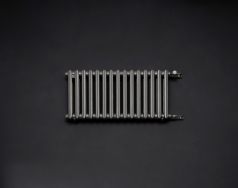
corporate
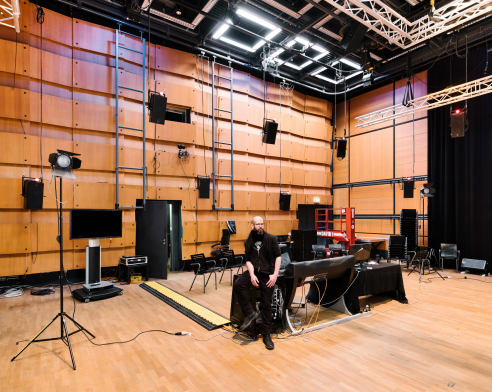
editorial
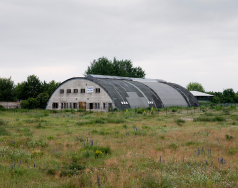
editorial
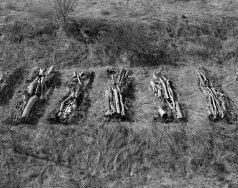
projects
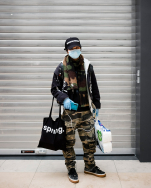
projects
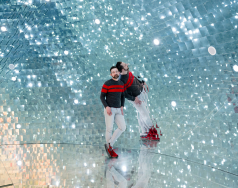
editorial
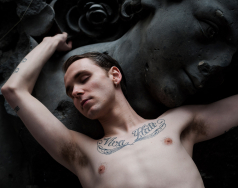
editorial
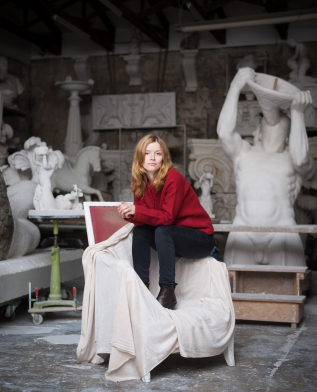
editorial
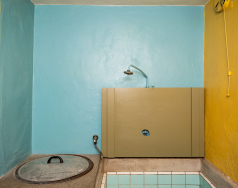
corporate
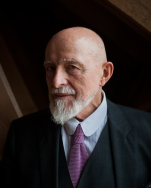
editorial
Thomas Meyer Photography
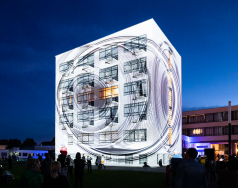
corporate
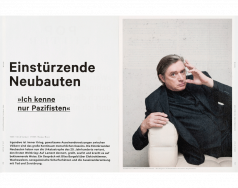
publications
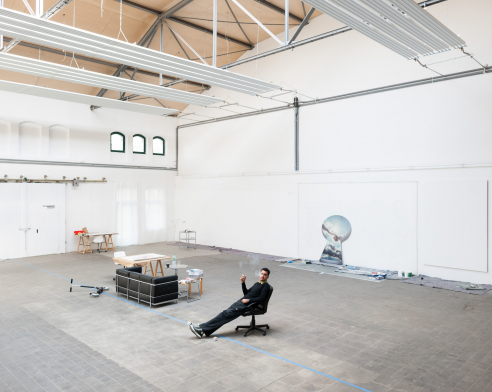
projects
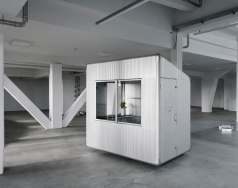
corporate
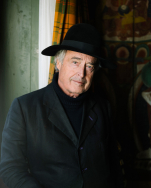
editorial
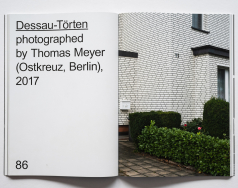
publications
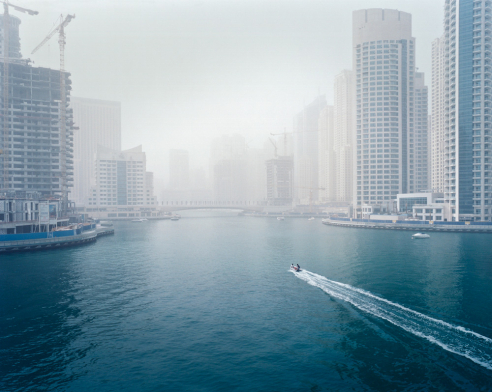
projects
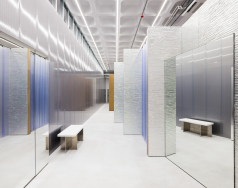
corporate
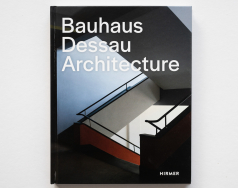
publications
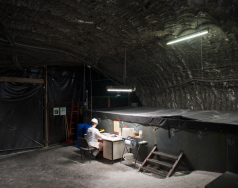
editorial
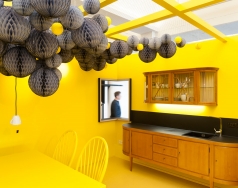
corporate
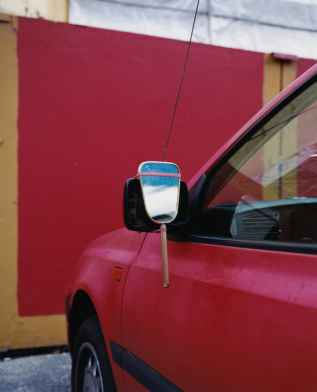
projects
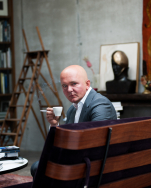
editorial
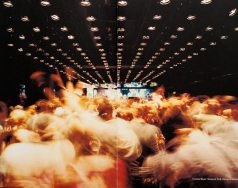
publications
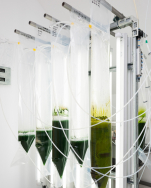
editorial
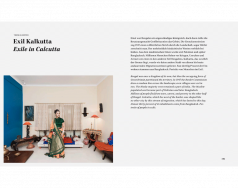
publications
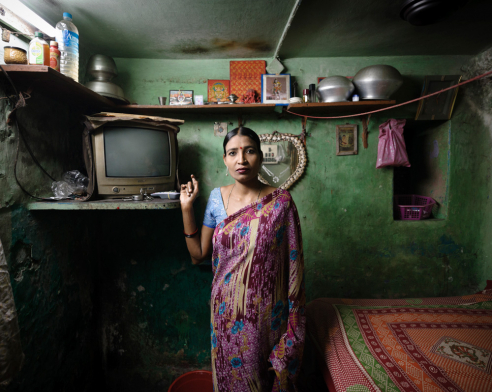
projects
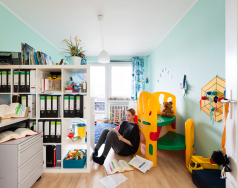
corporate
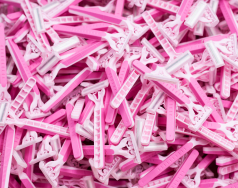
editorial
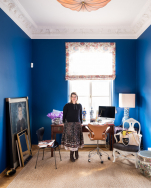
editorial
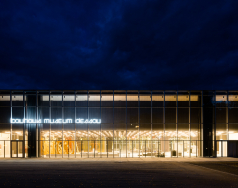
corporate
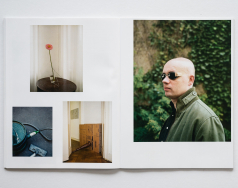
publications
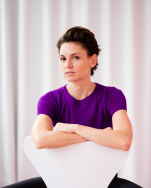
corporate
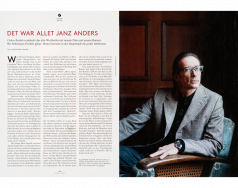
publications
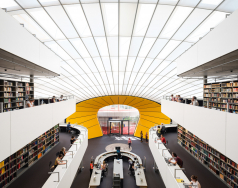
corporate
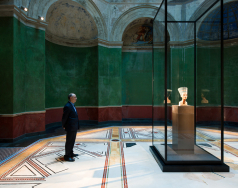
editorial
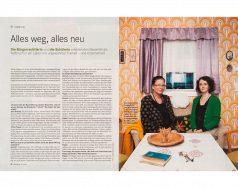
publications
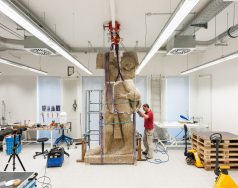
corporate
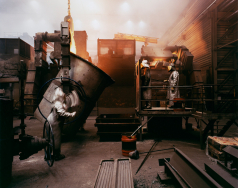
editorial
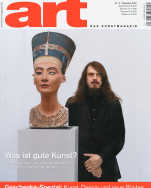
publications
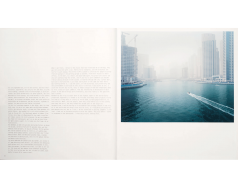
publications
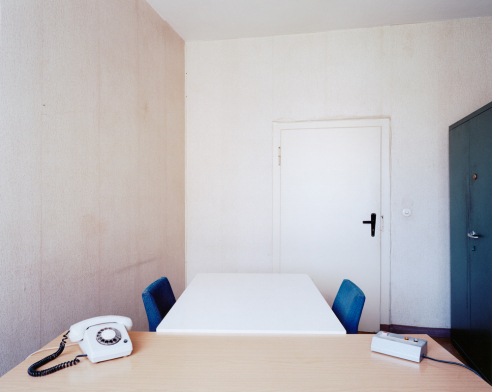
projects
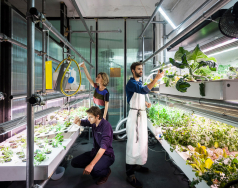
editorial
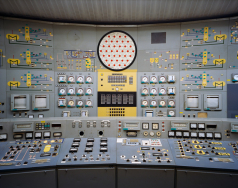
editorial
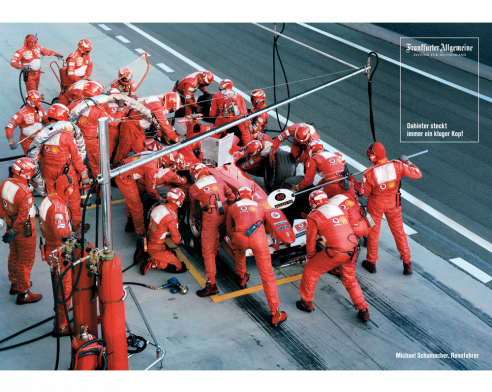
corporate
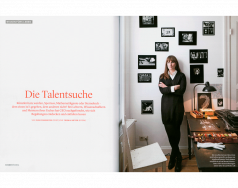
publications
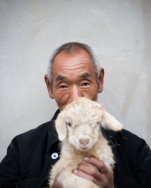
editorial
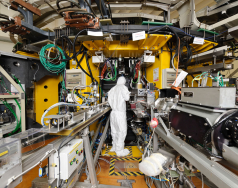
editorial
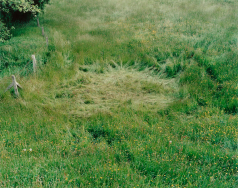
projects
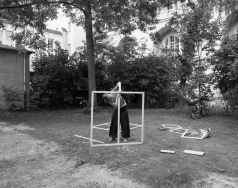
projects
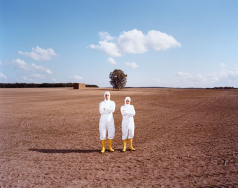
editorial
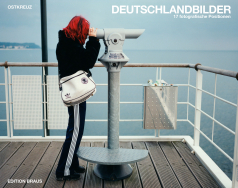
publications
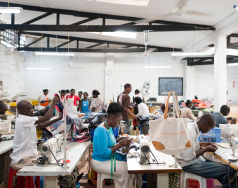
editorial
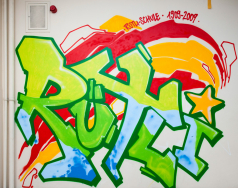
editorial
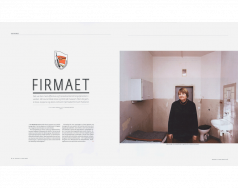
publications
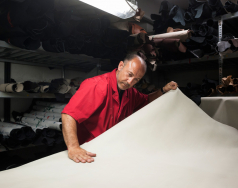
editorial
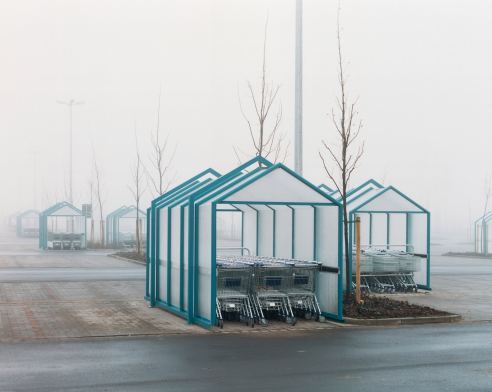
projects
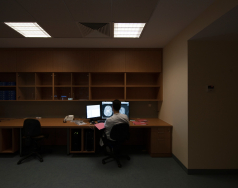
editorial
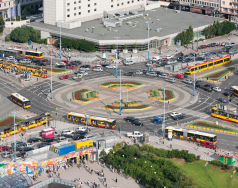
editorial
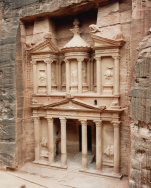
editorial
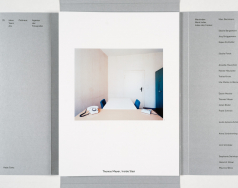
publications
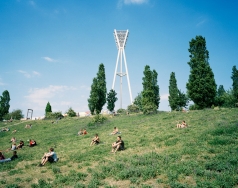
editorial
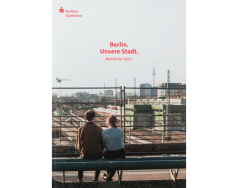
corporate
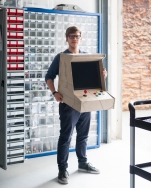
editorial

publications

publications
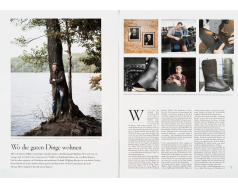
publications
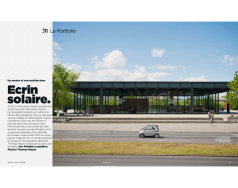
publications

publications

publications

publications
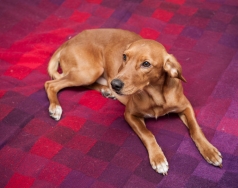
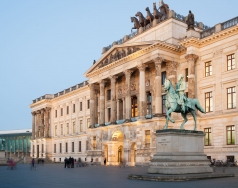
editorial
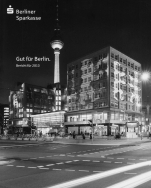
corporate
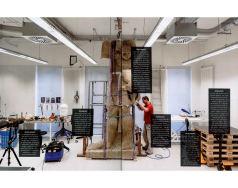
publications
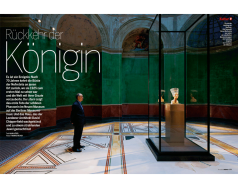
publications

publications
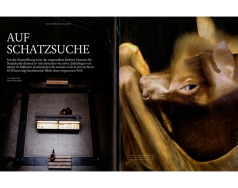
publications
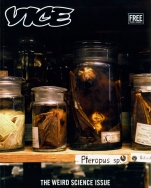
publications